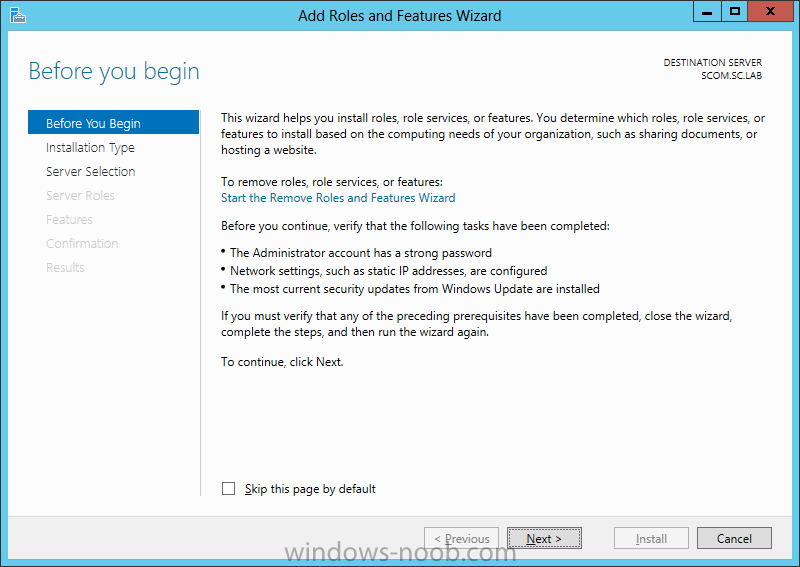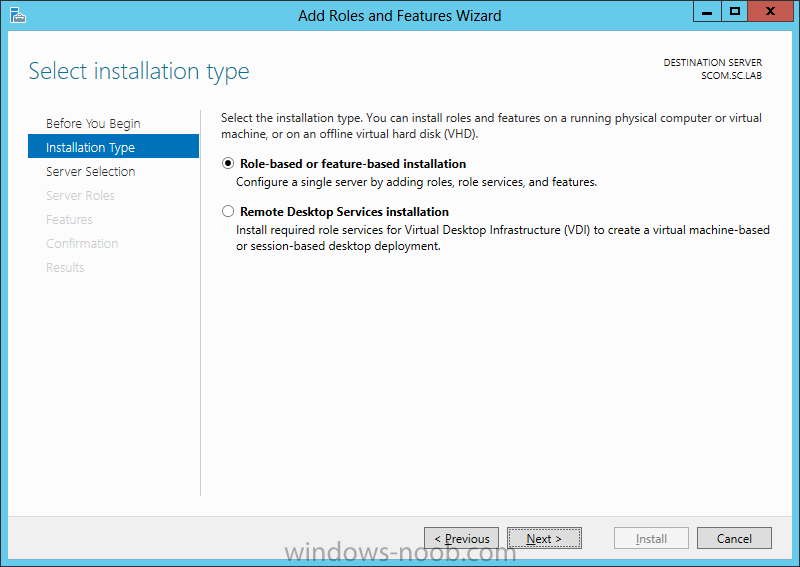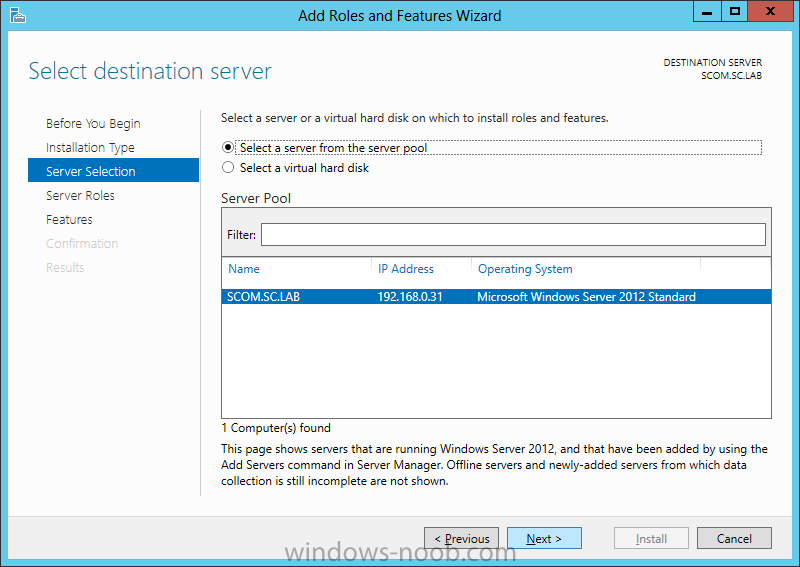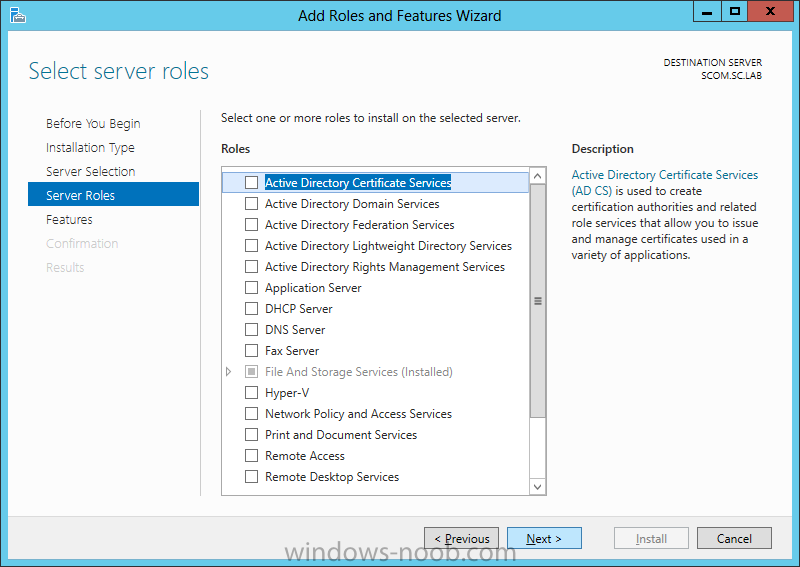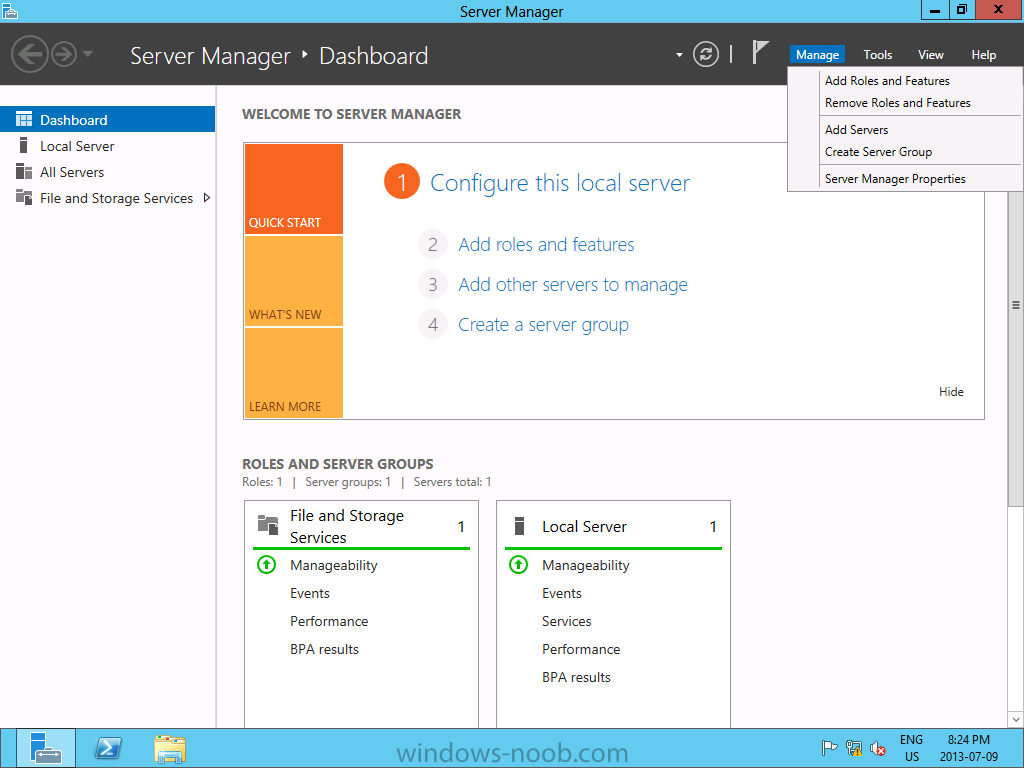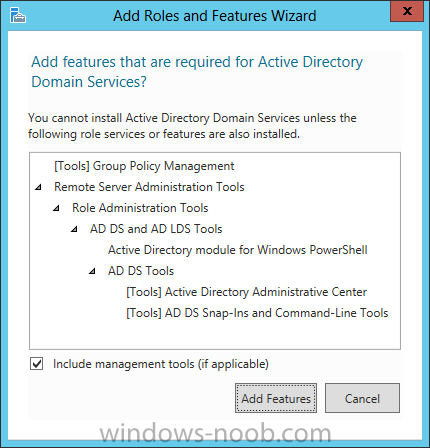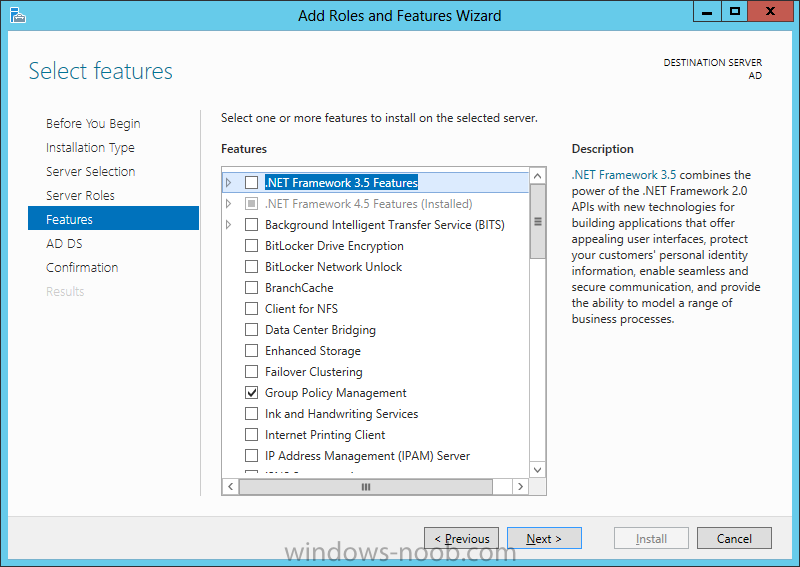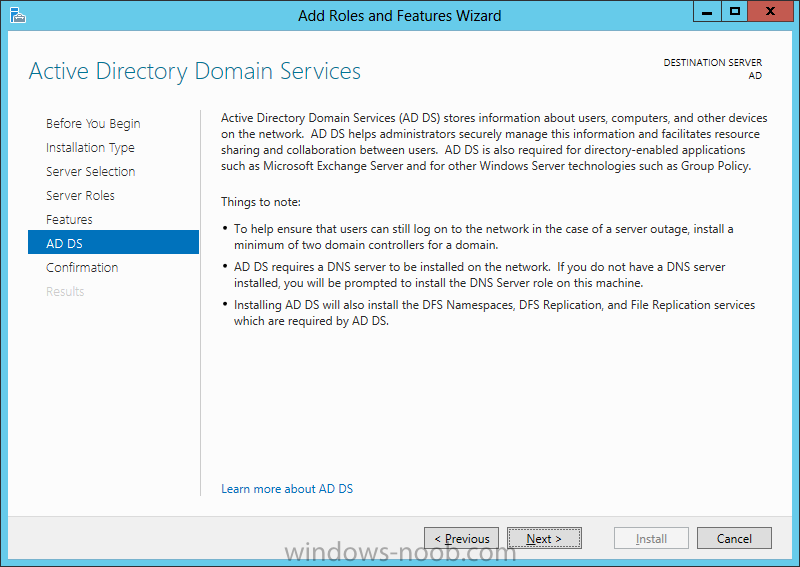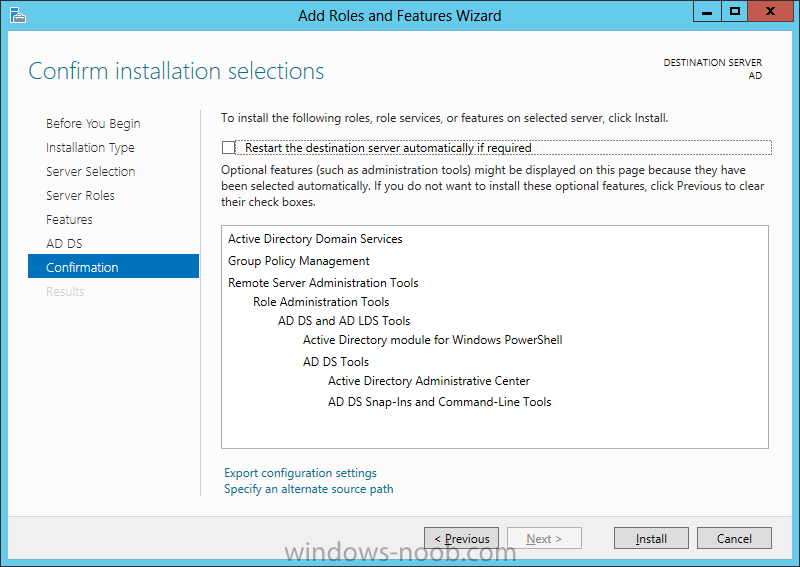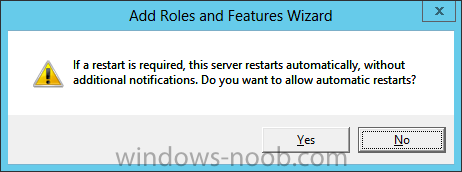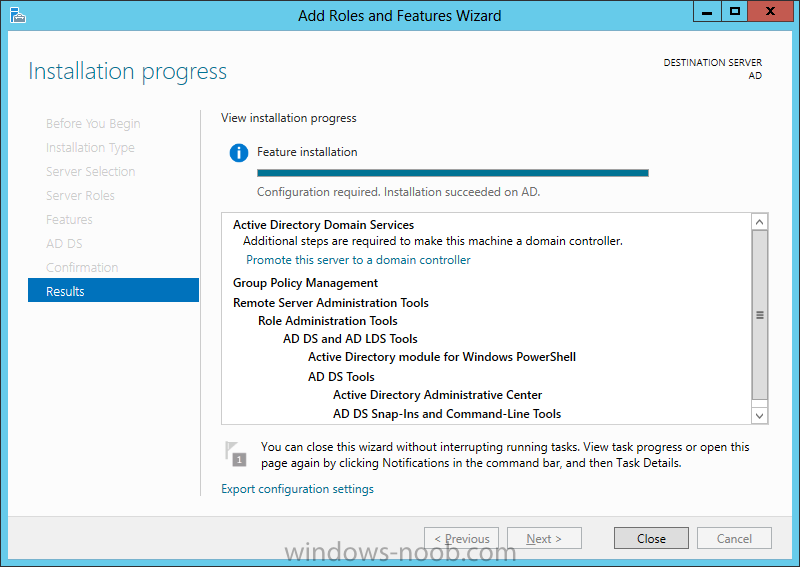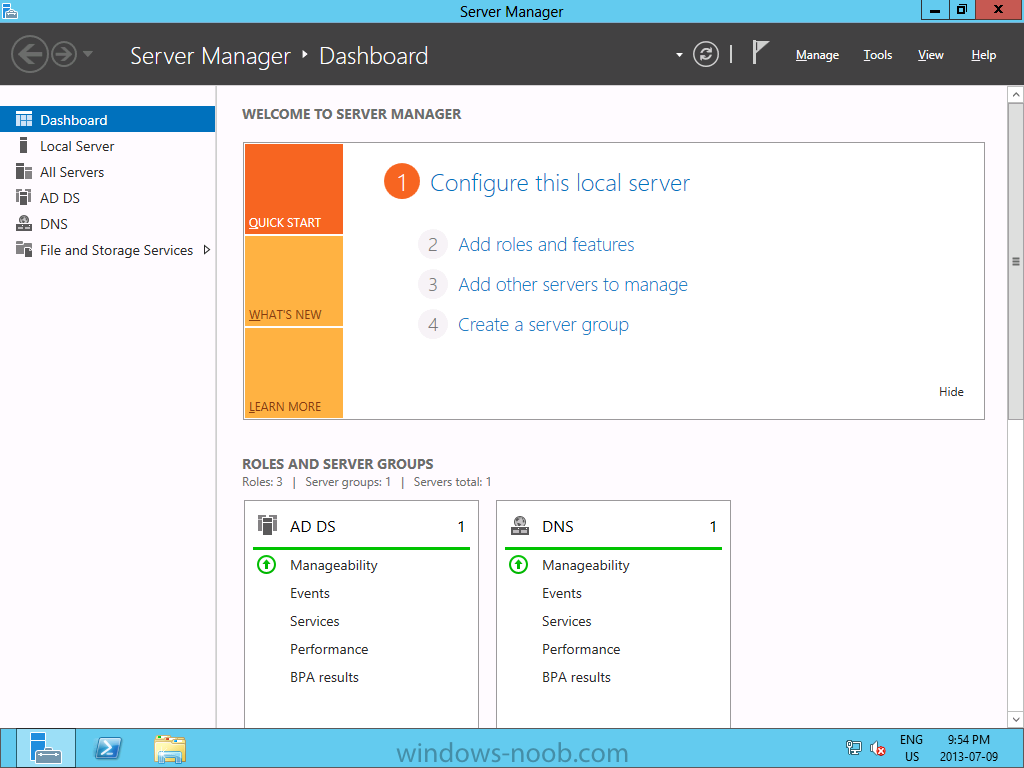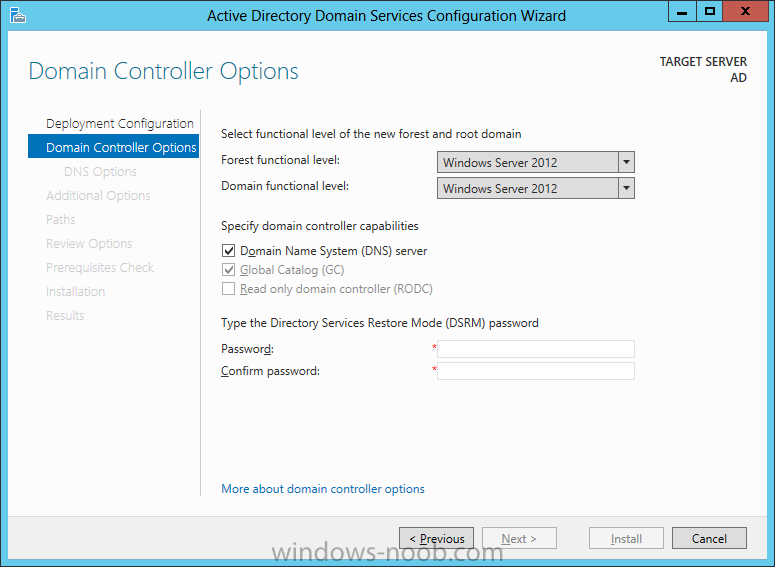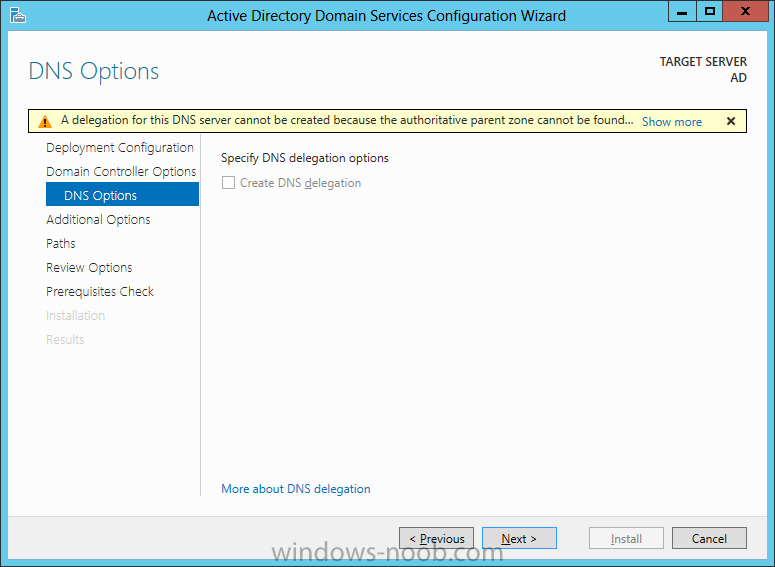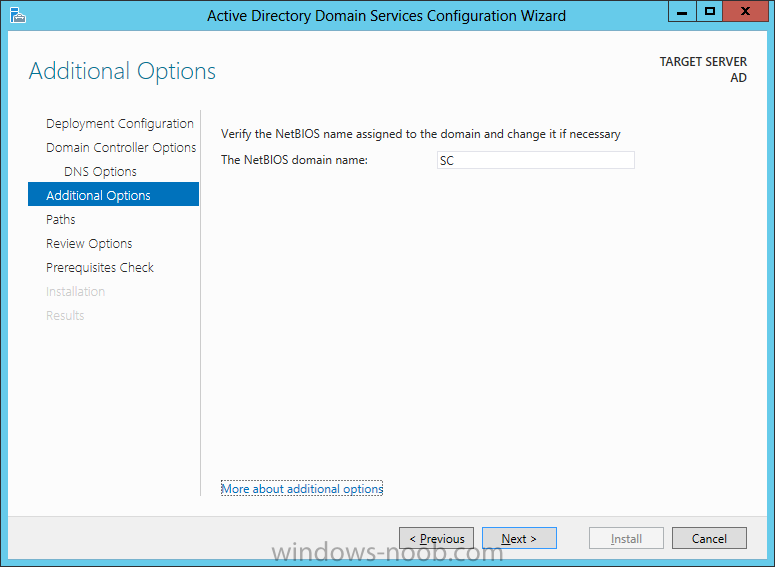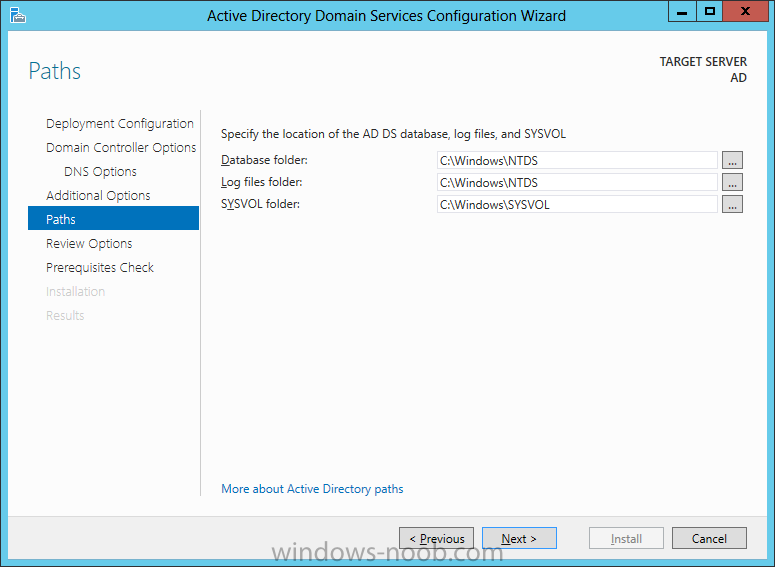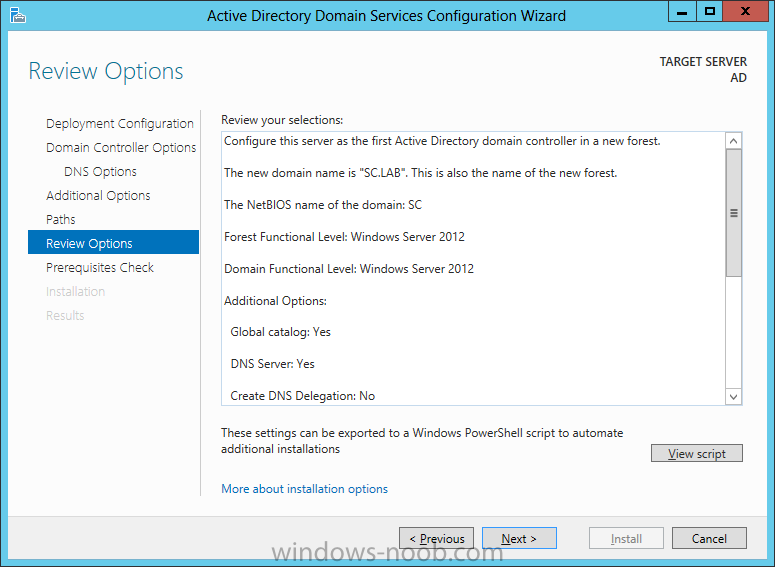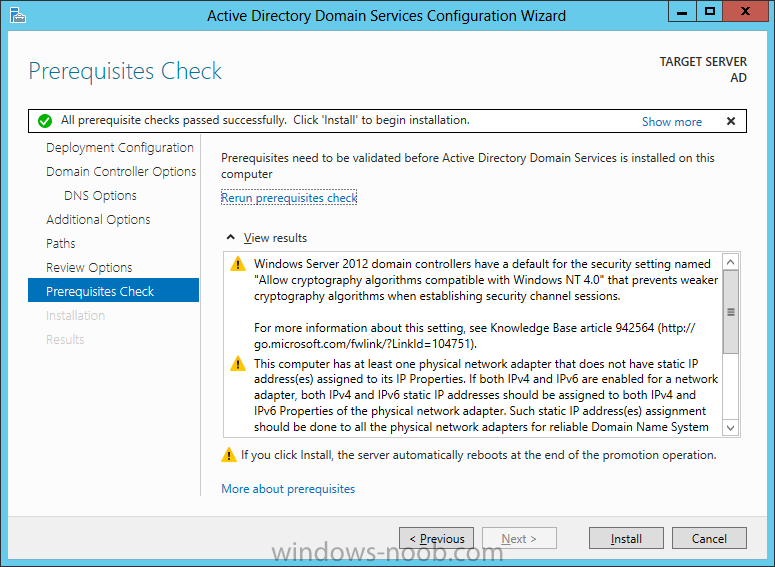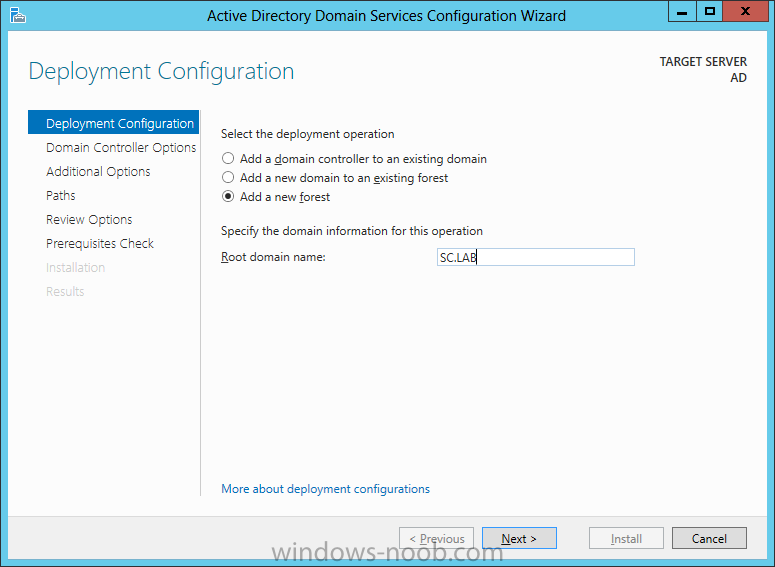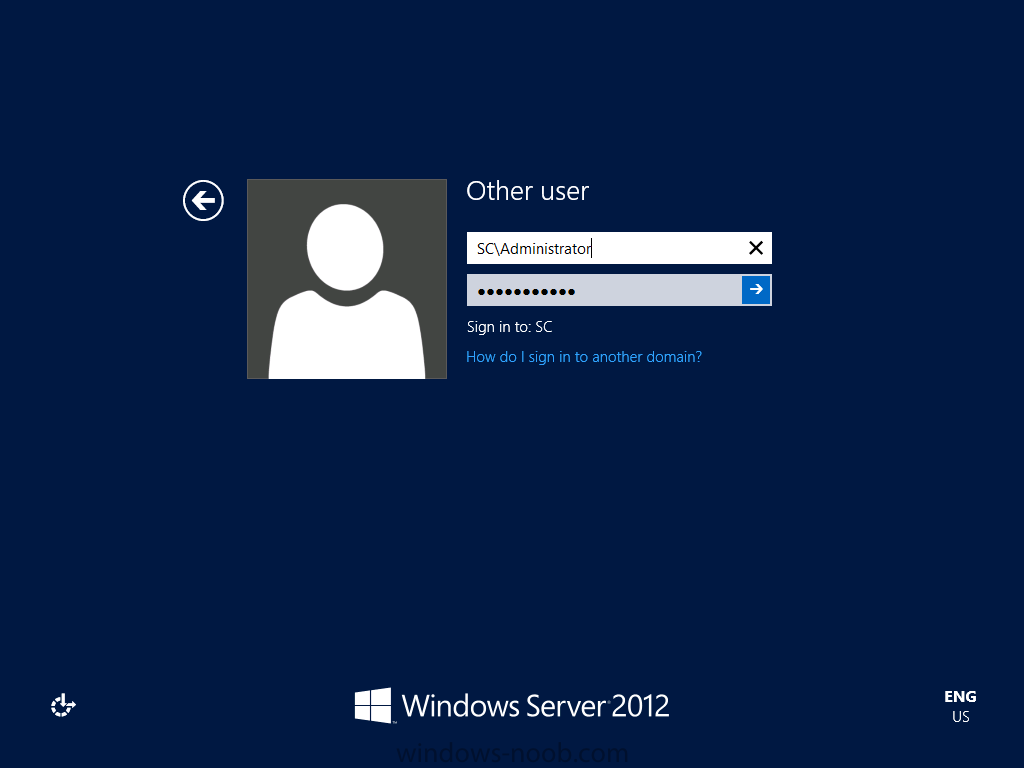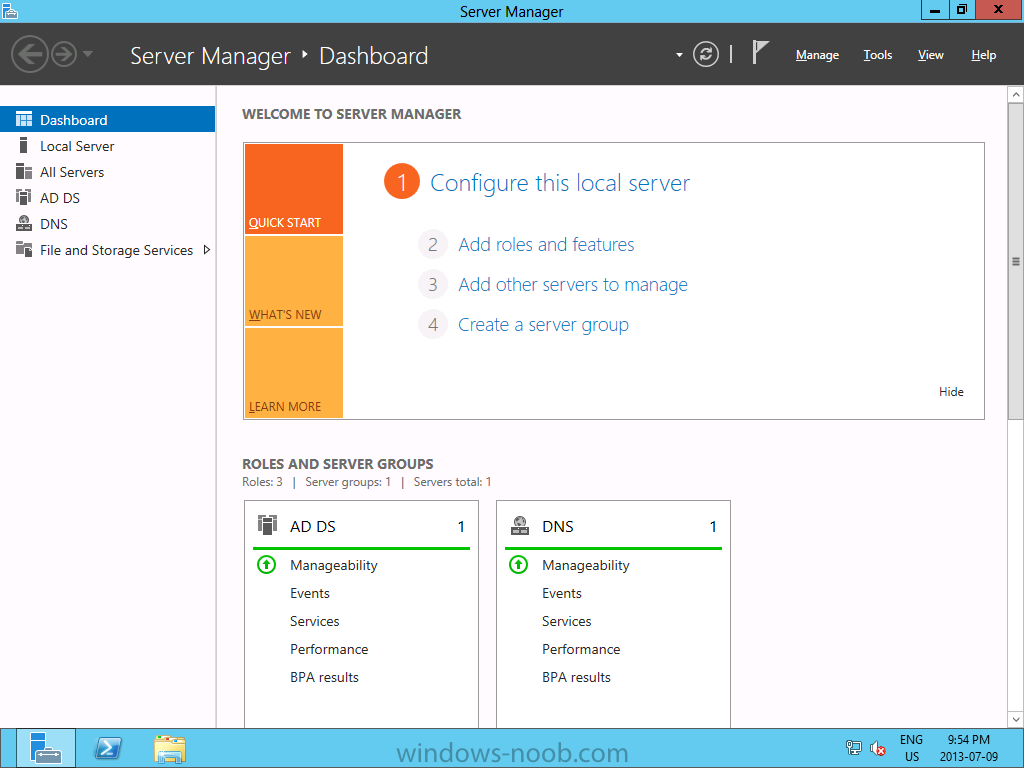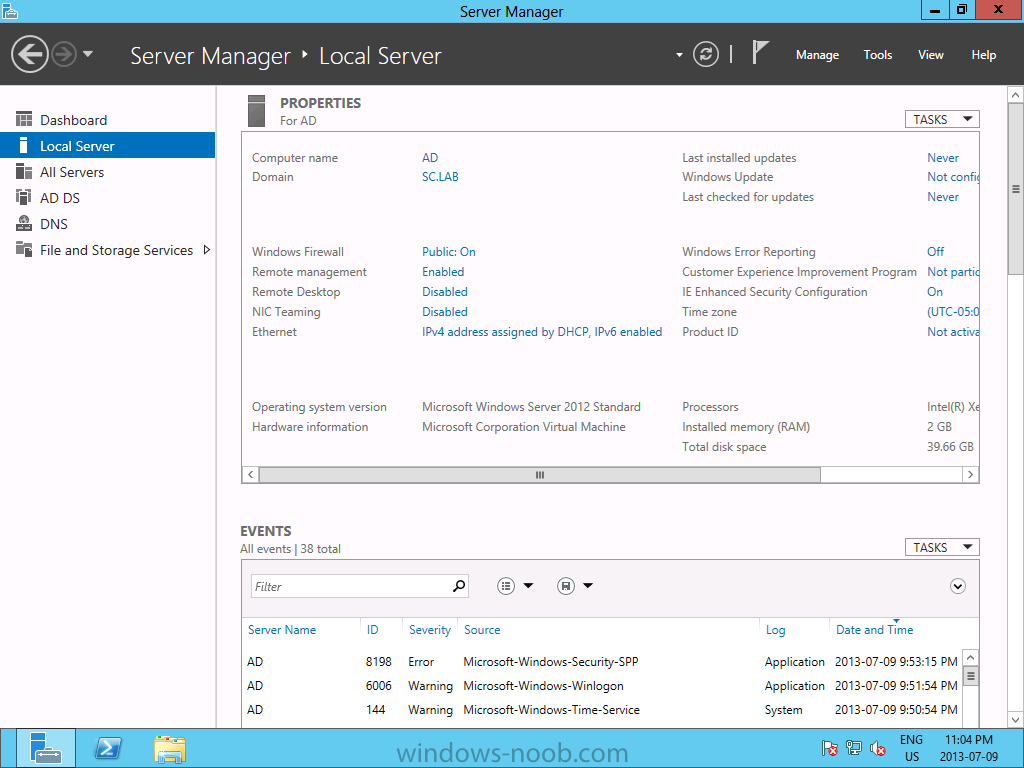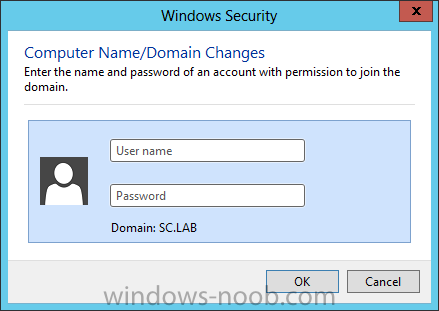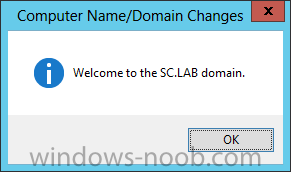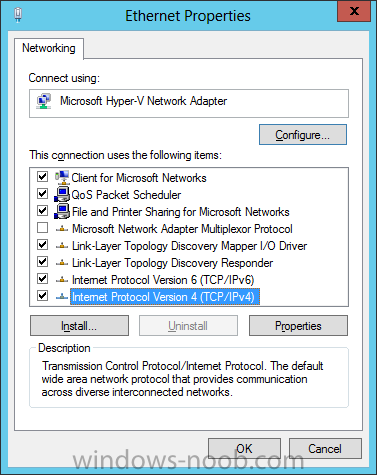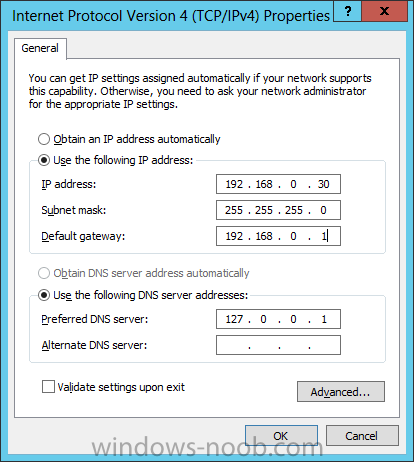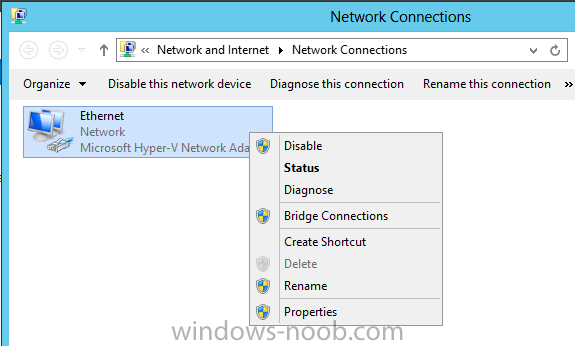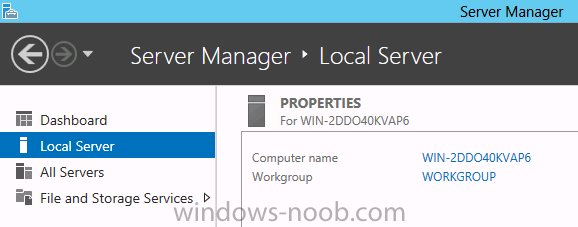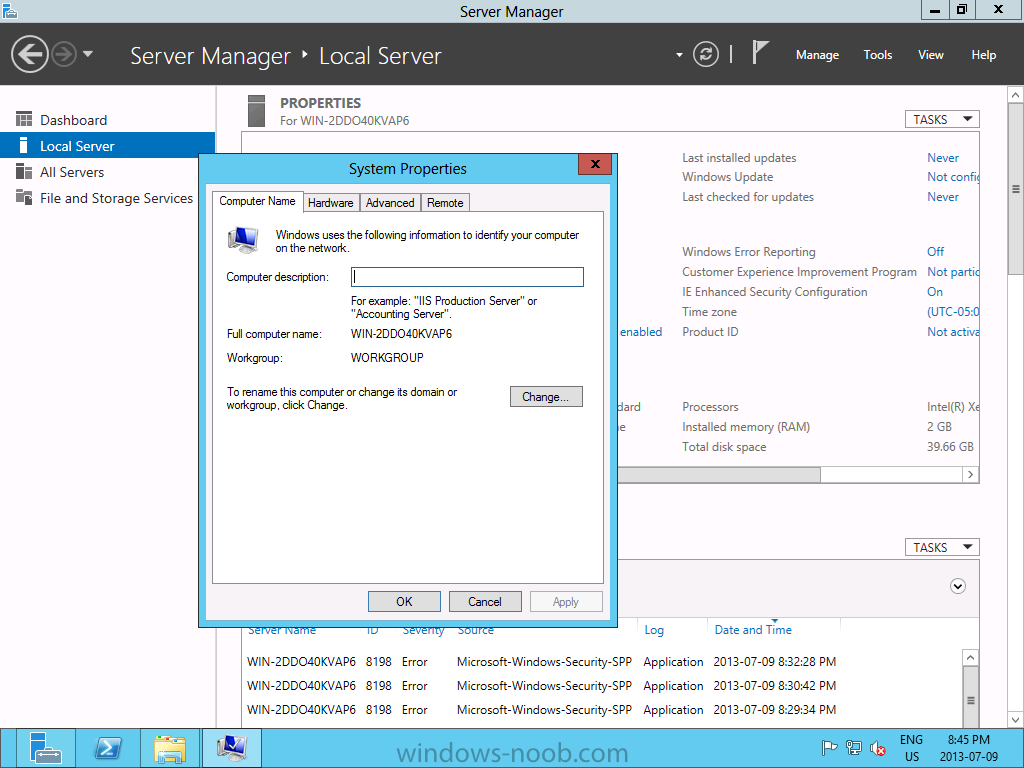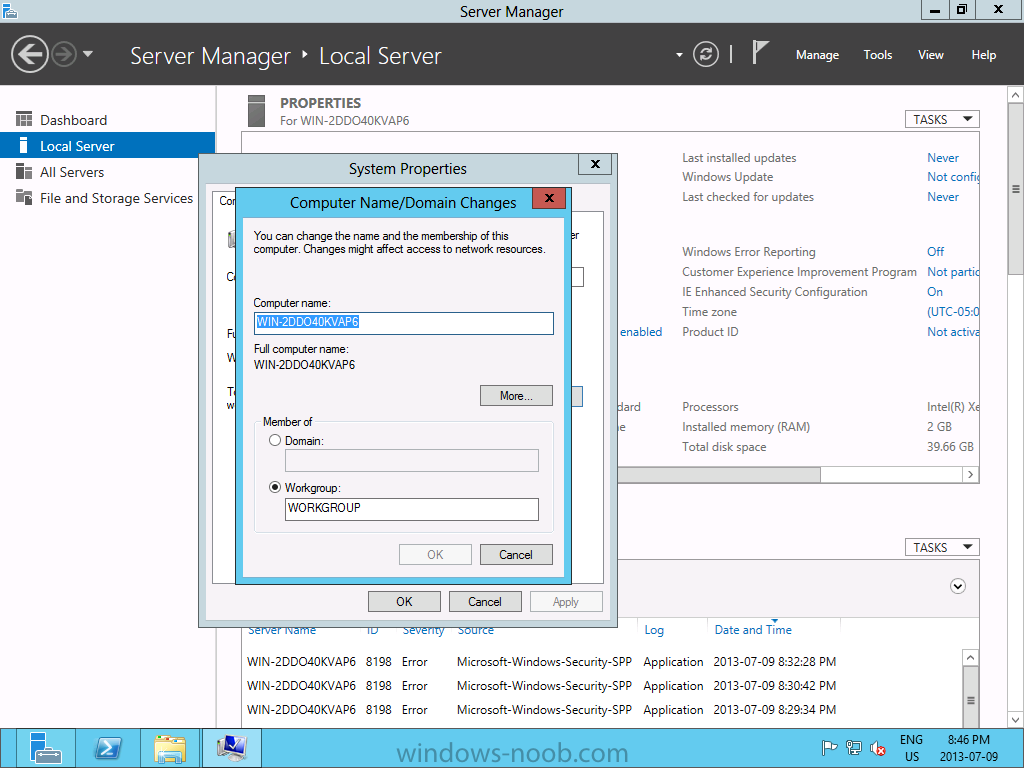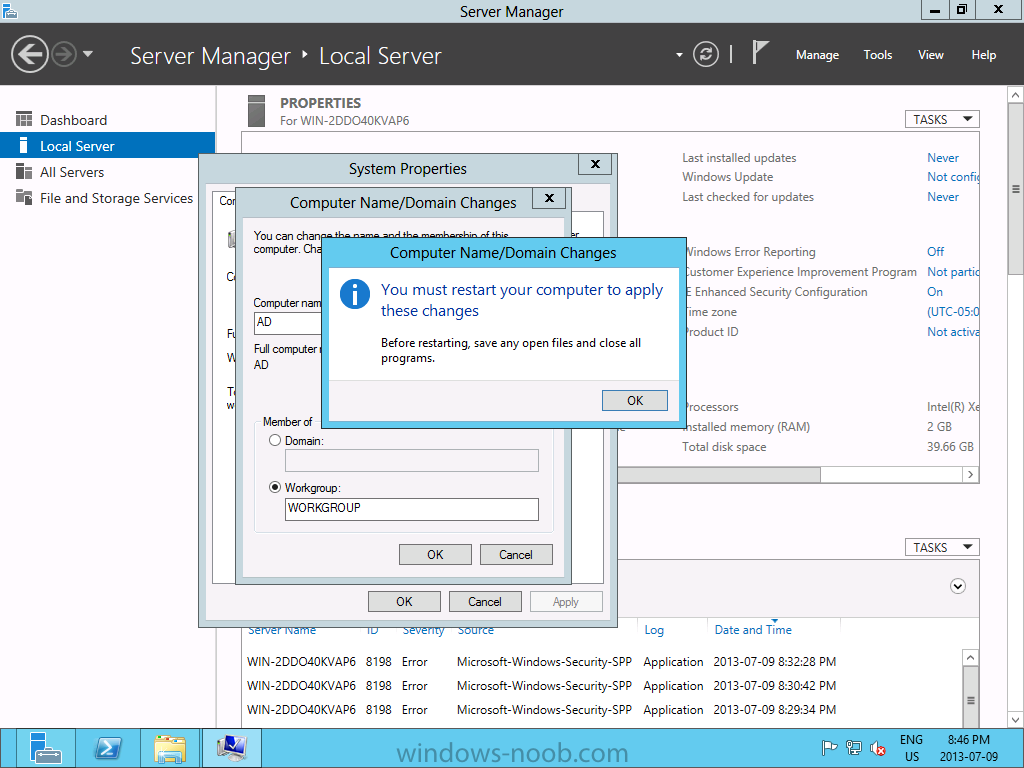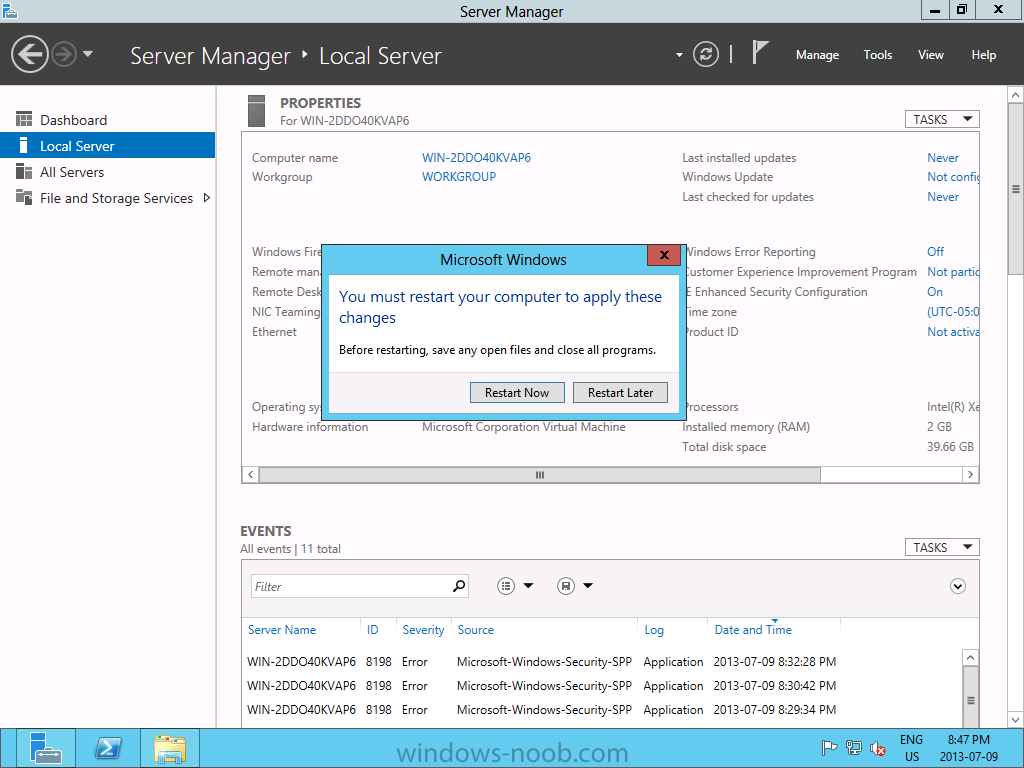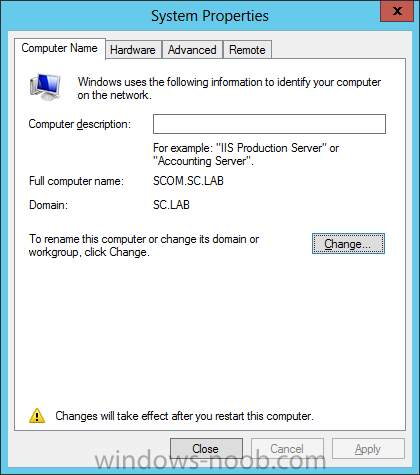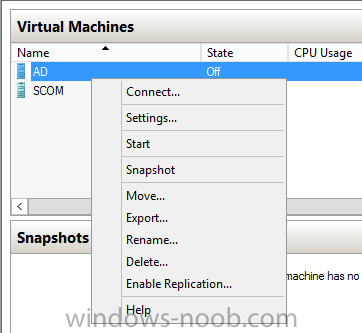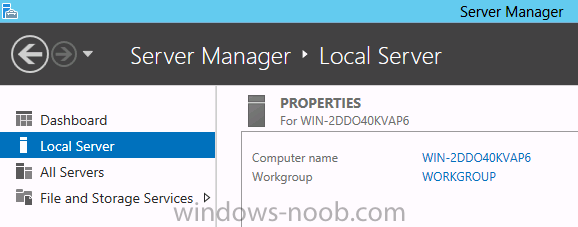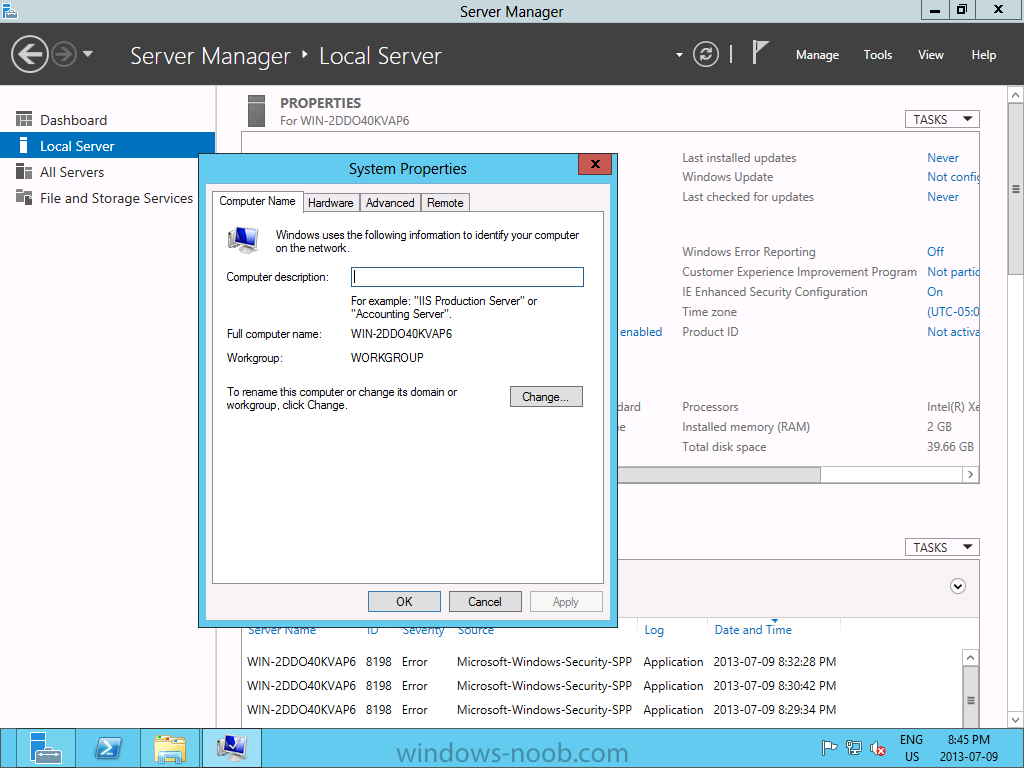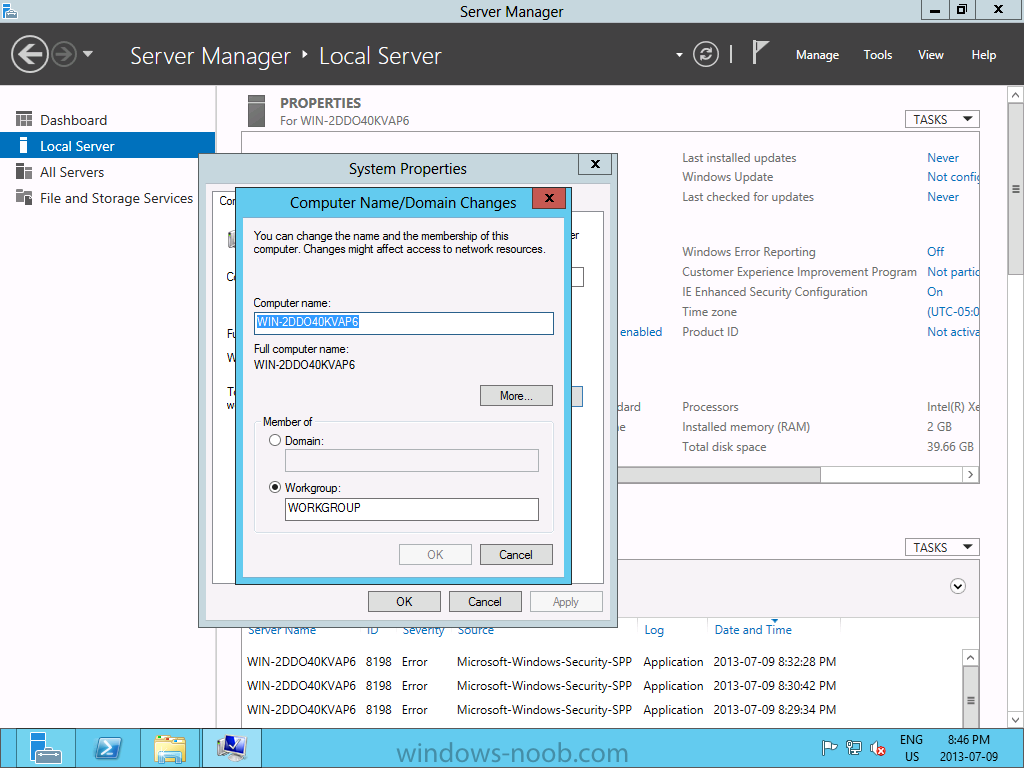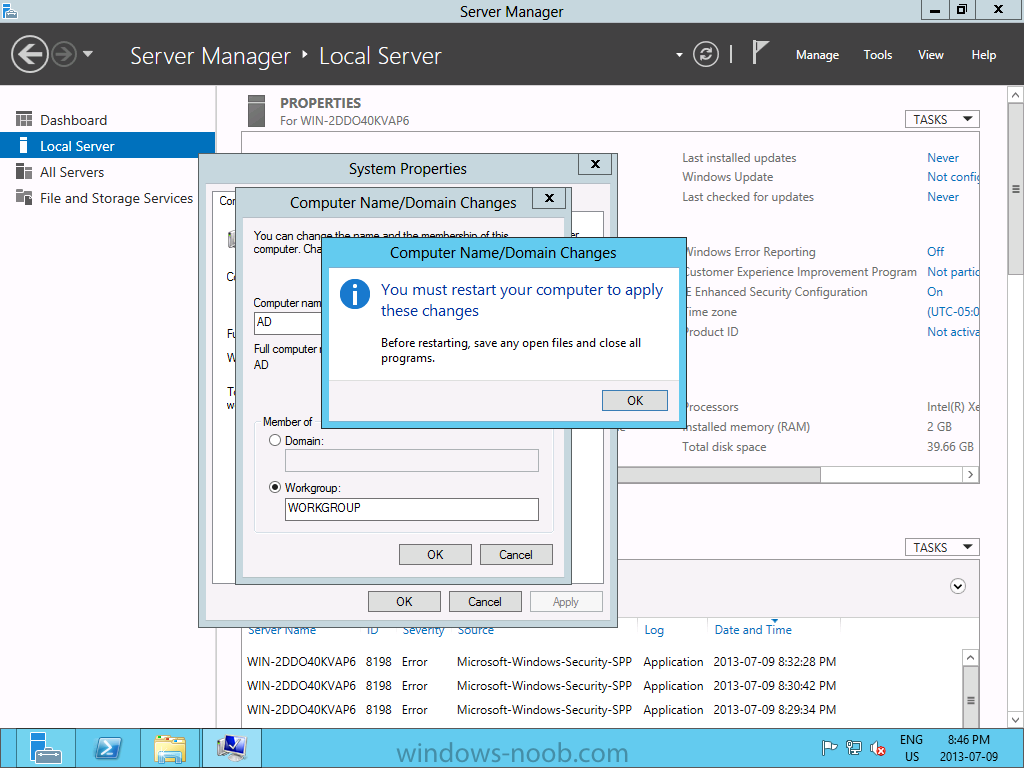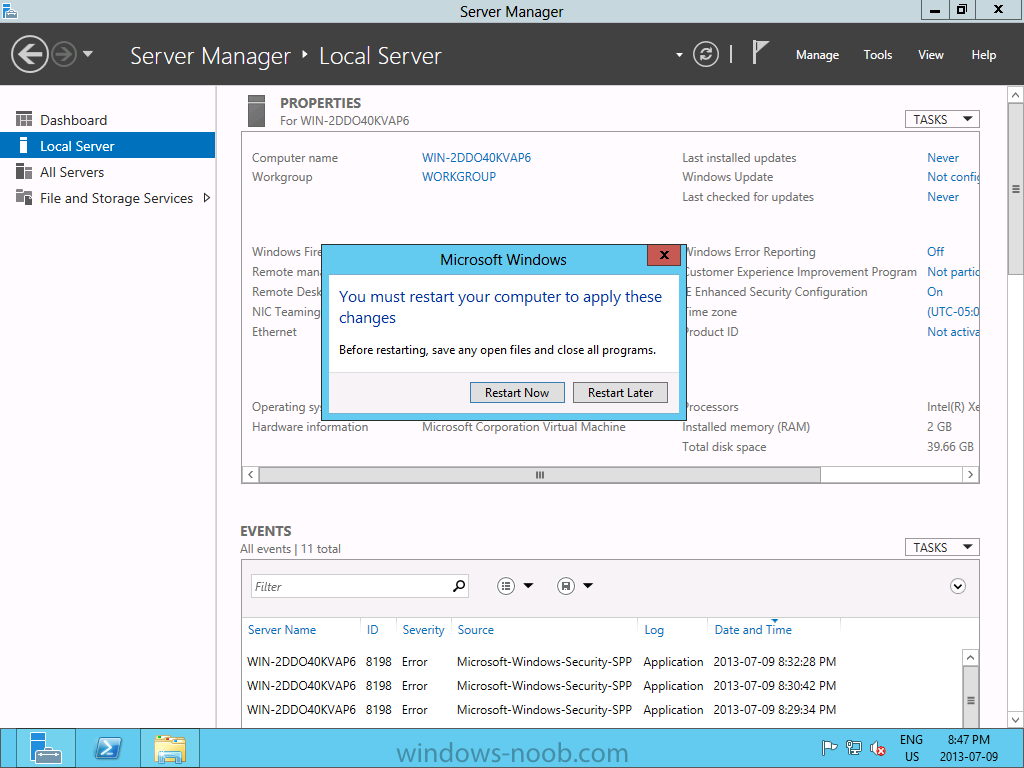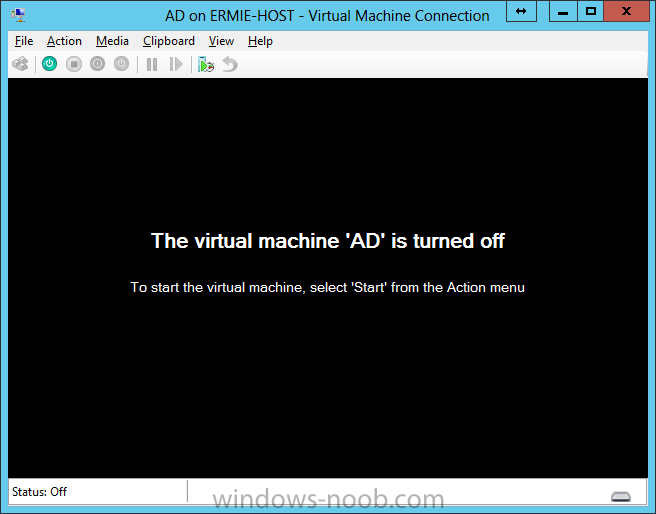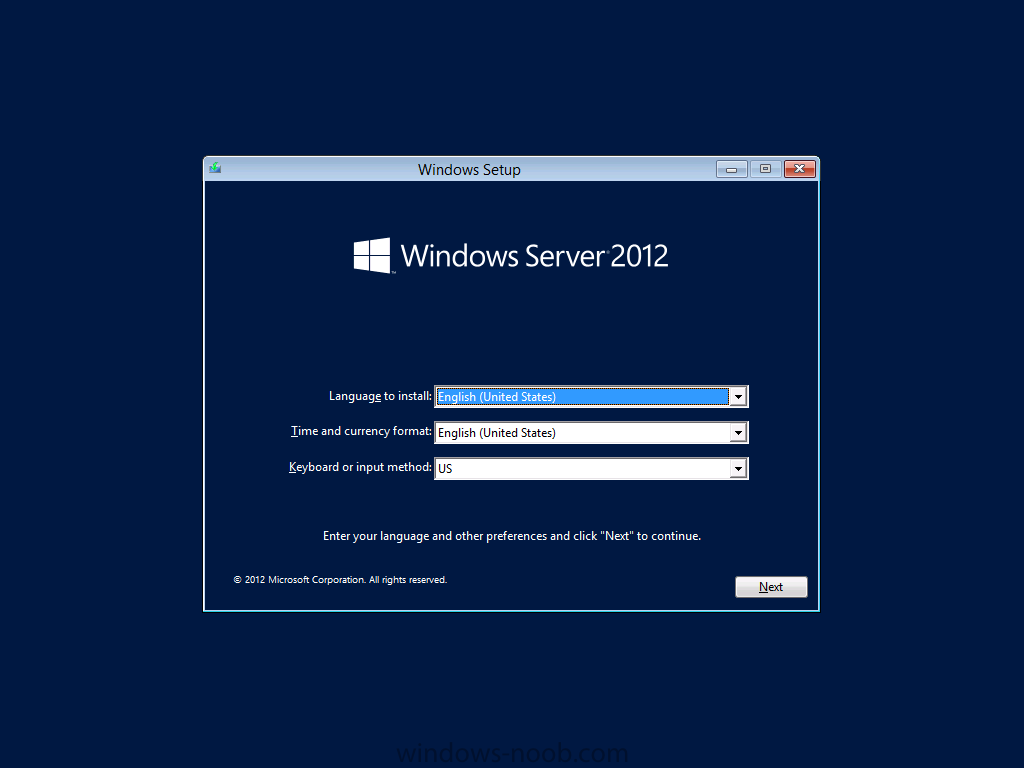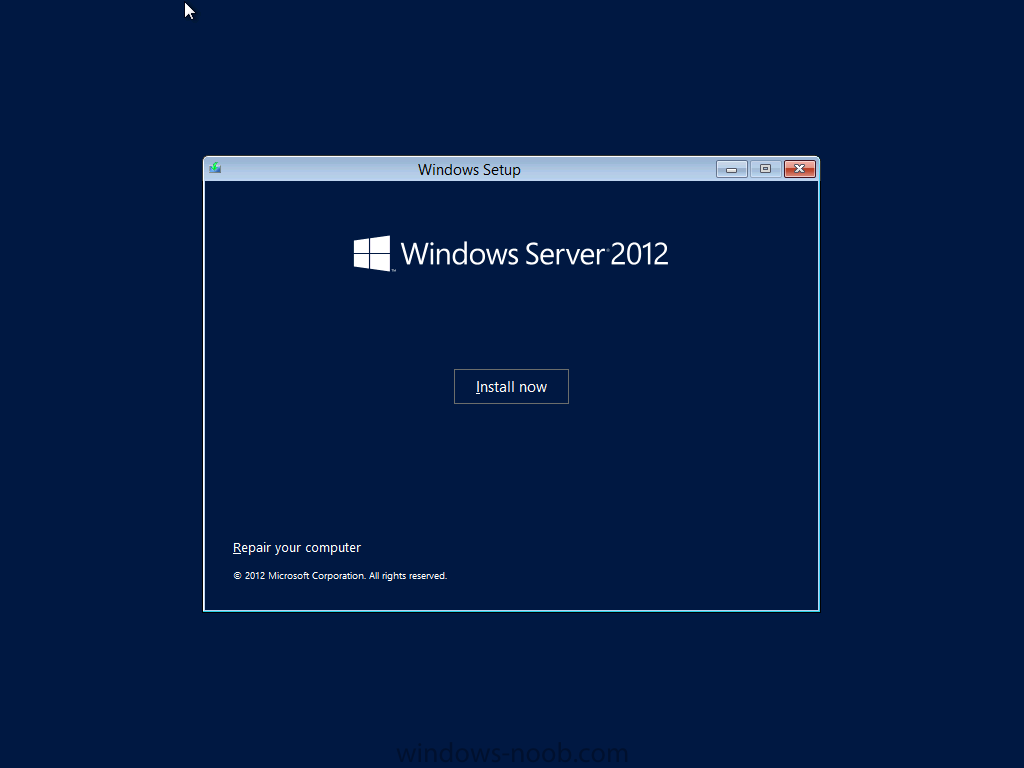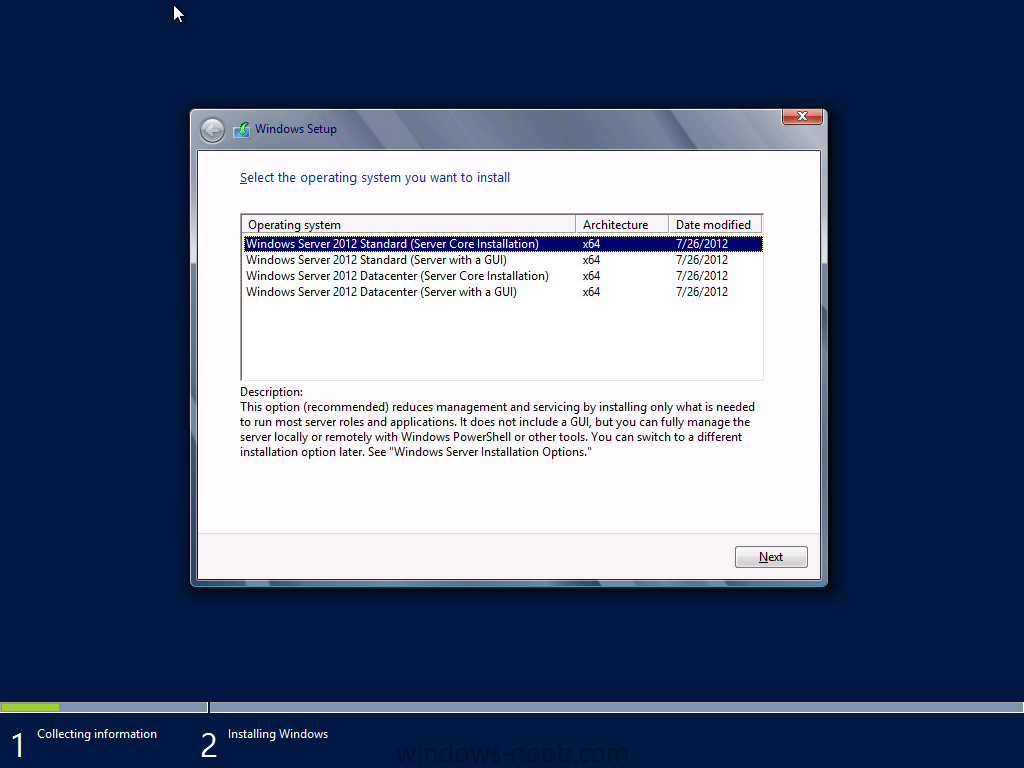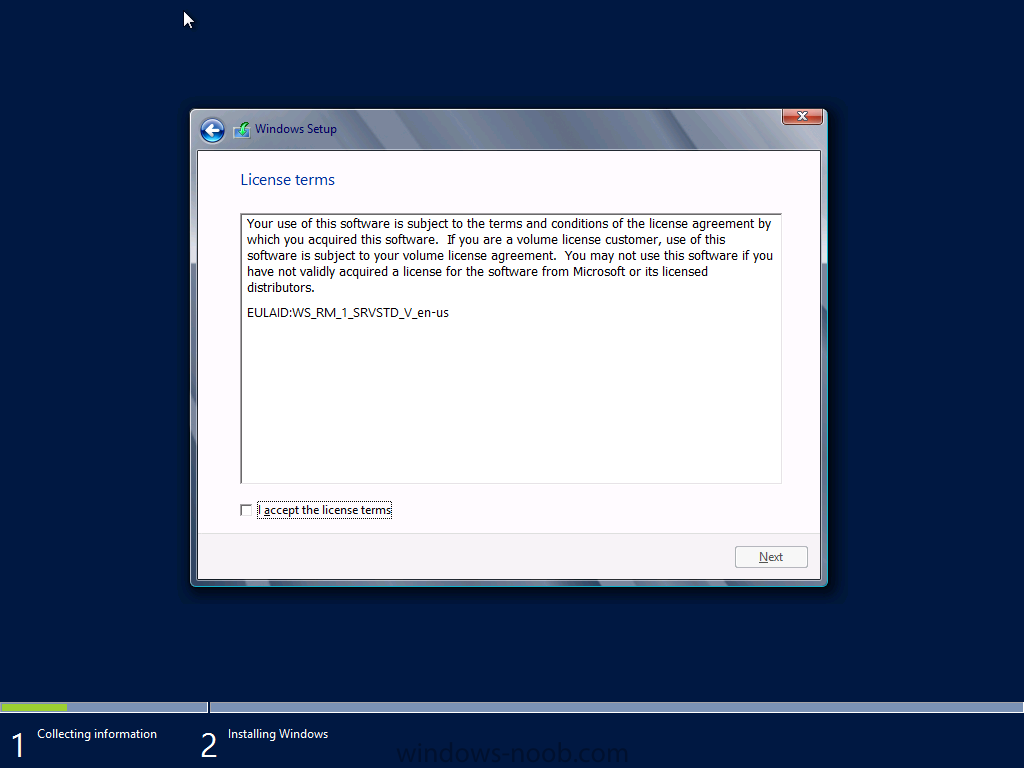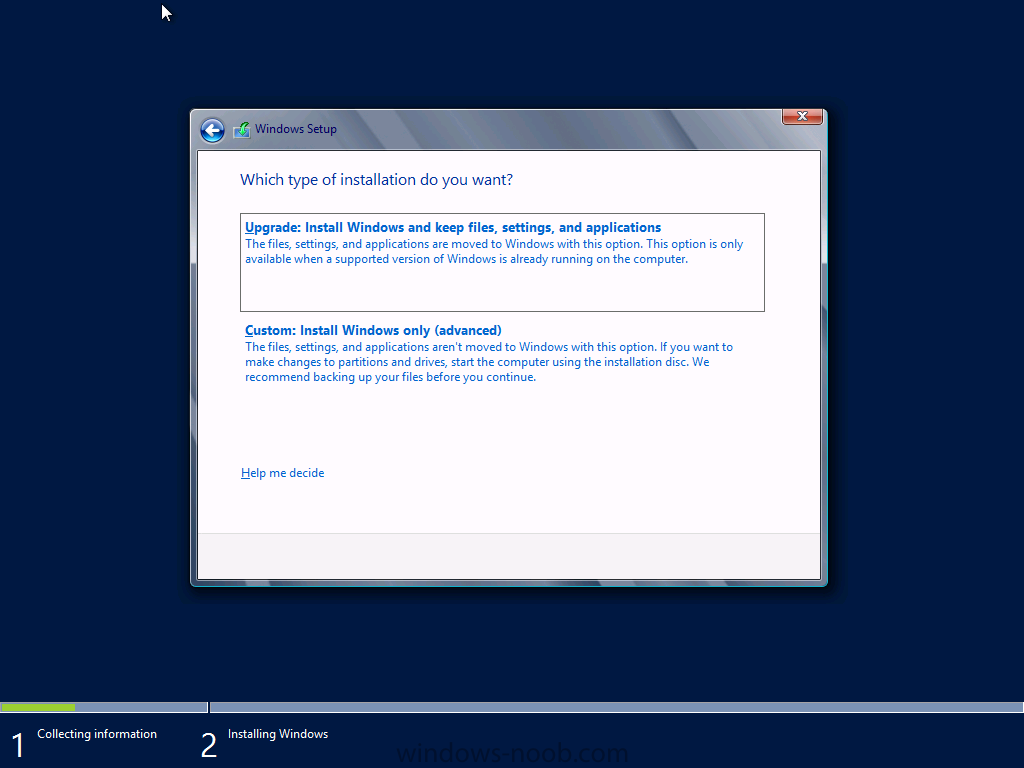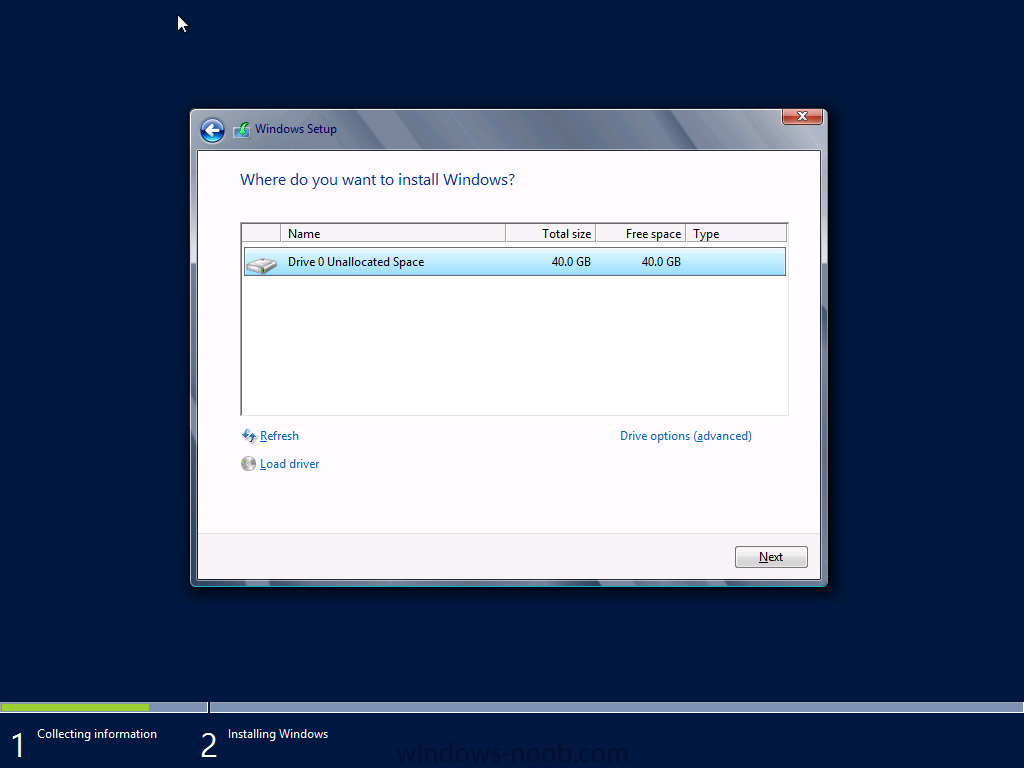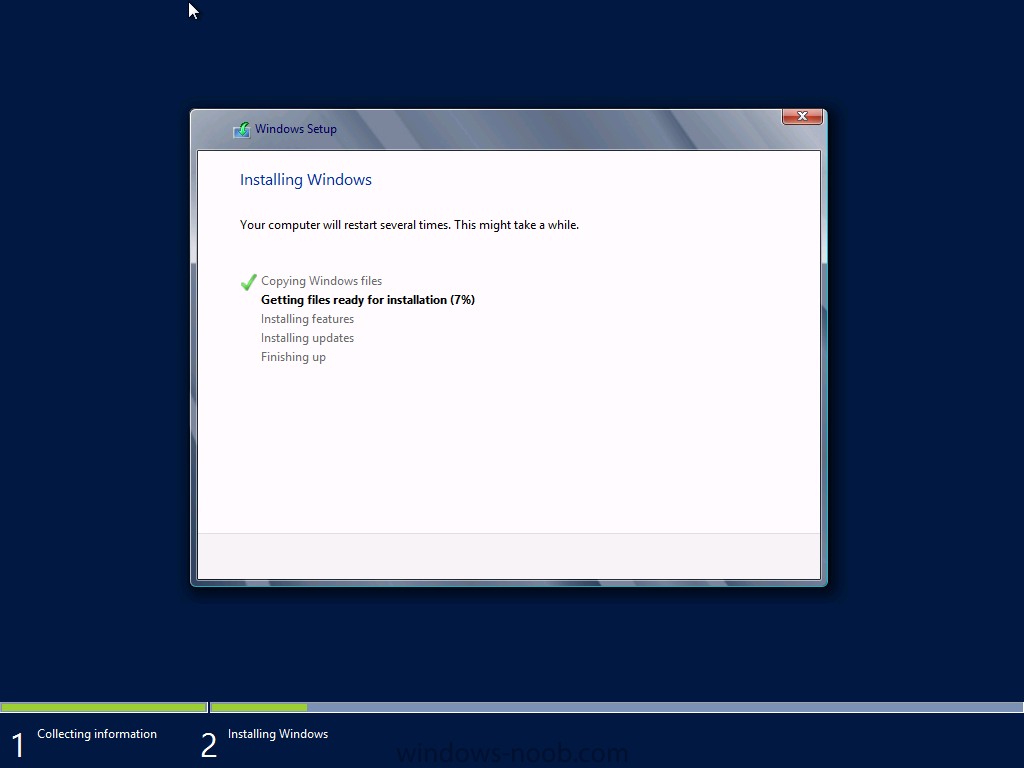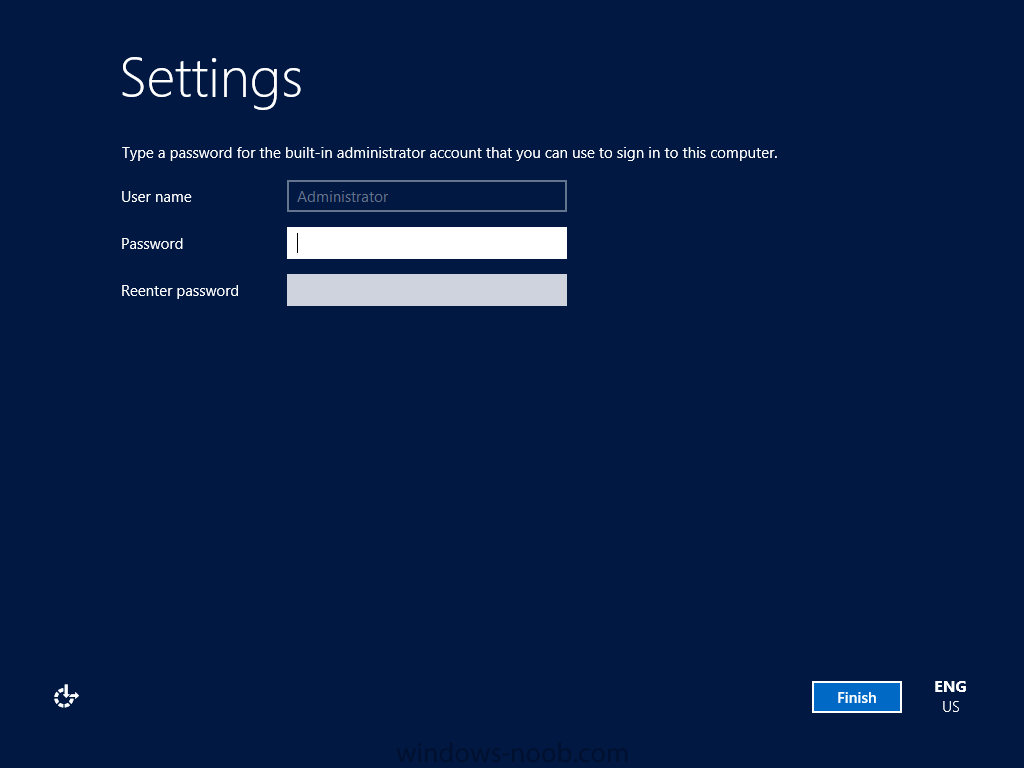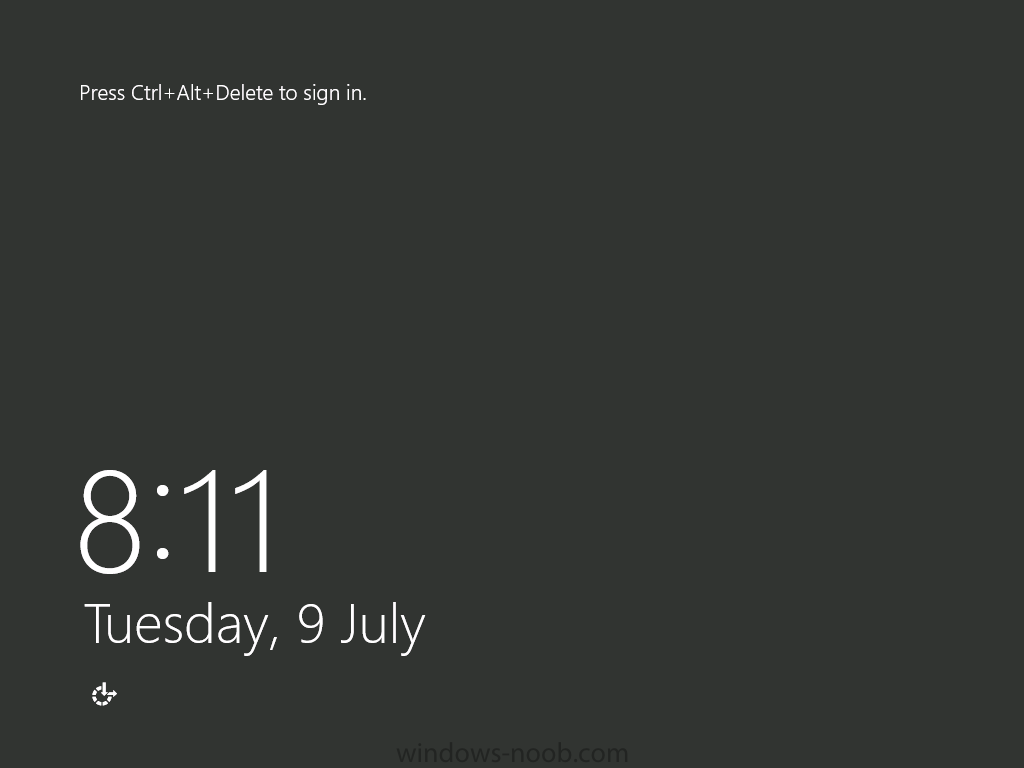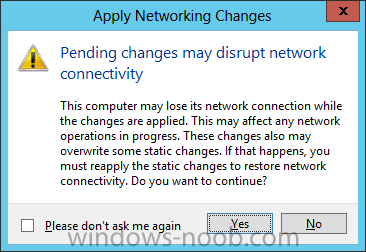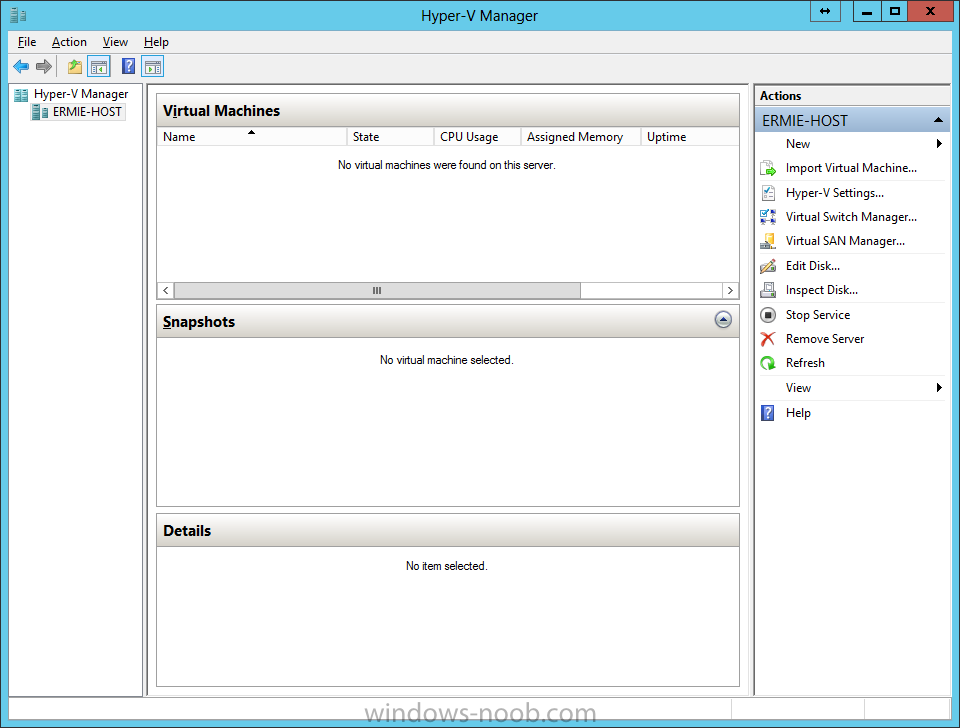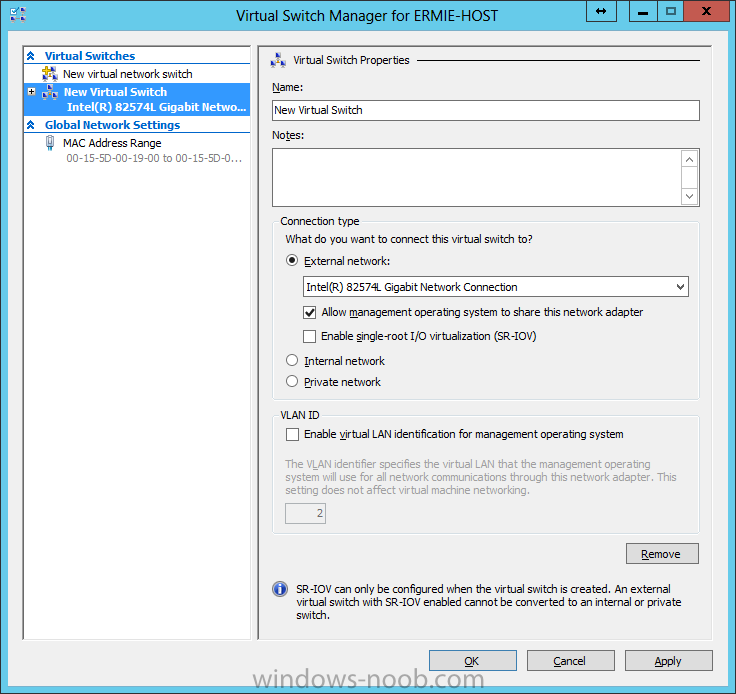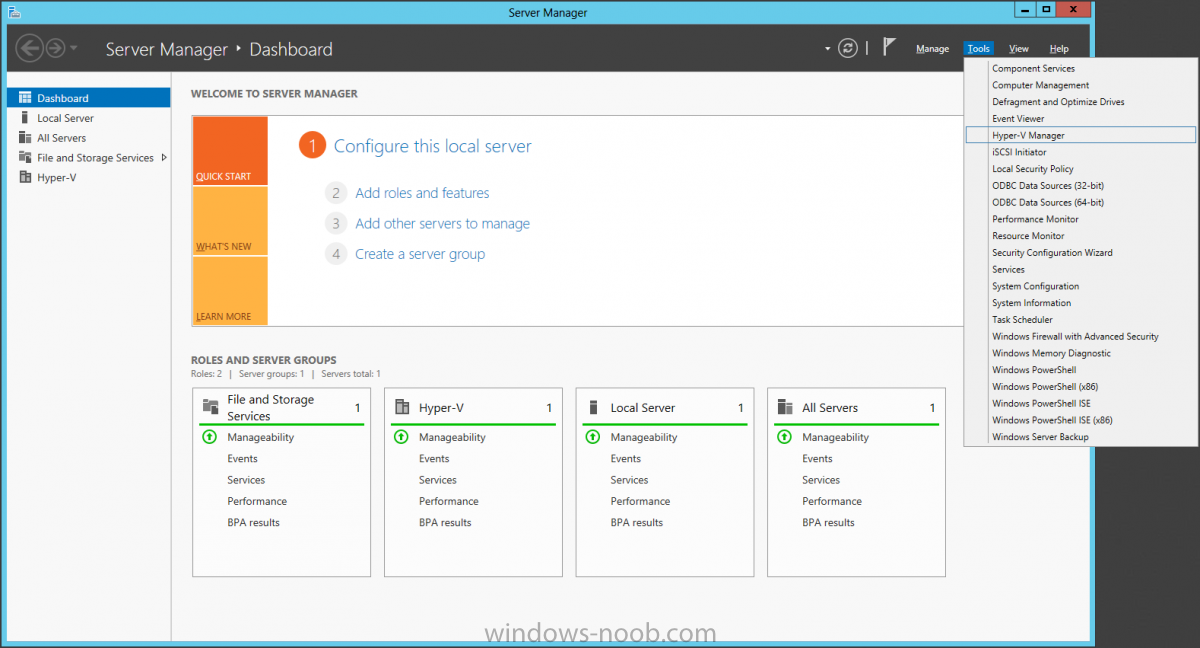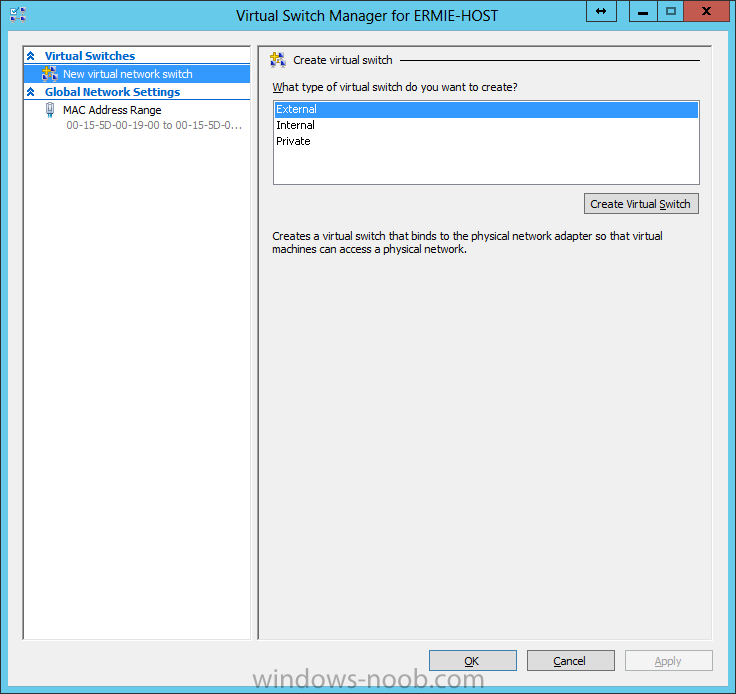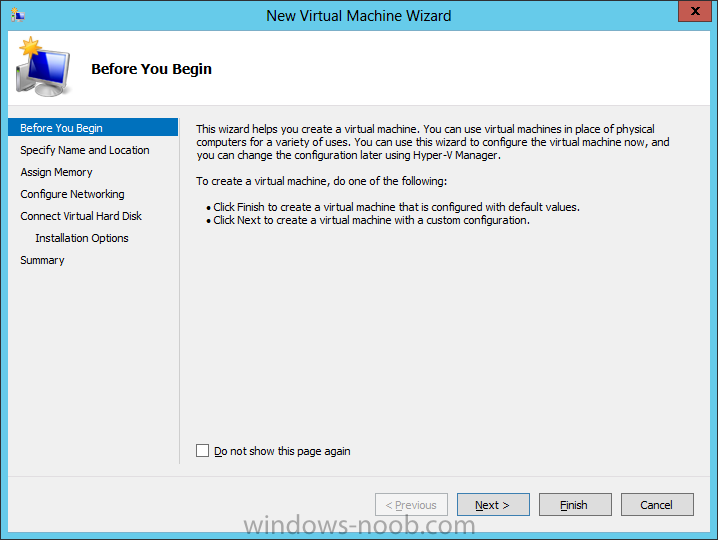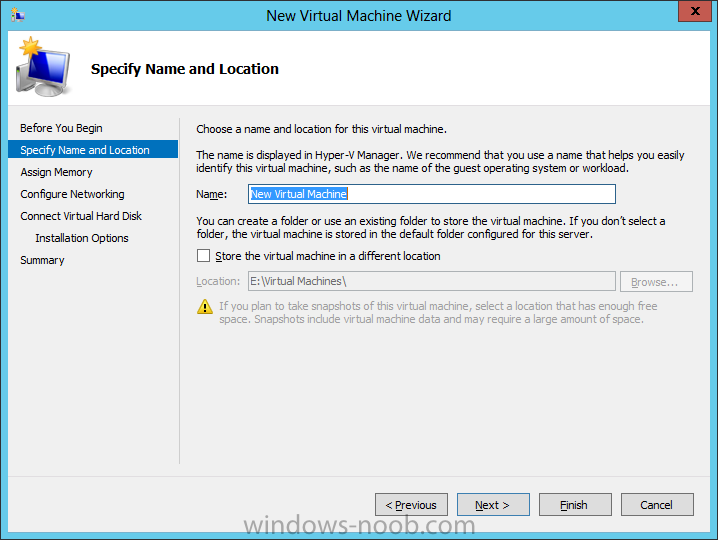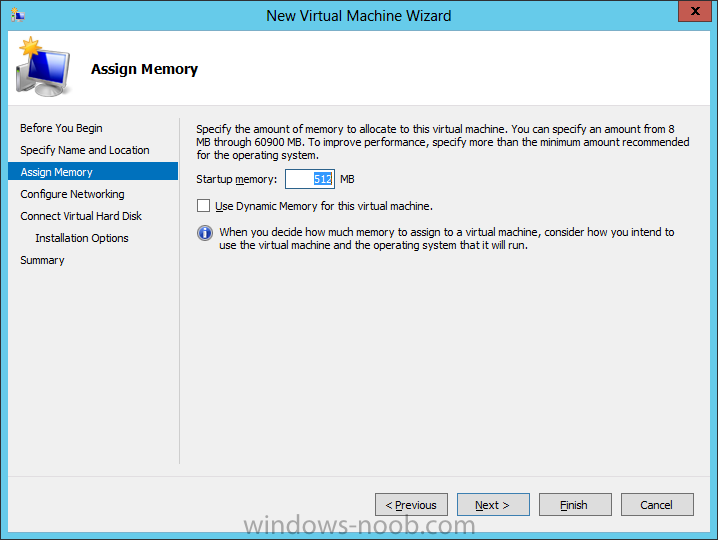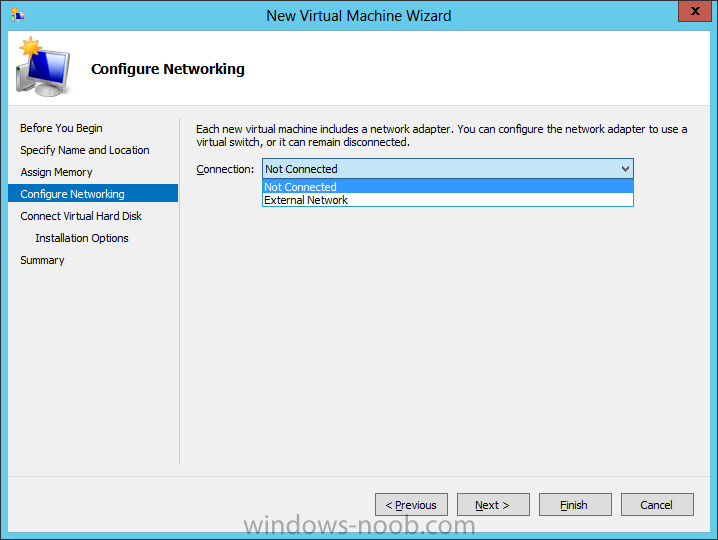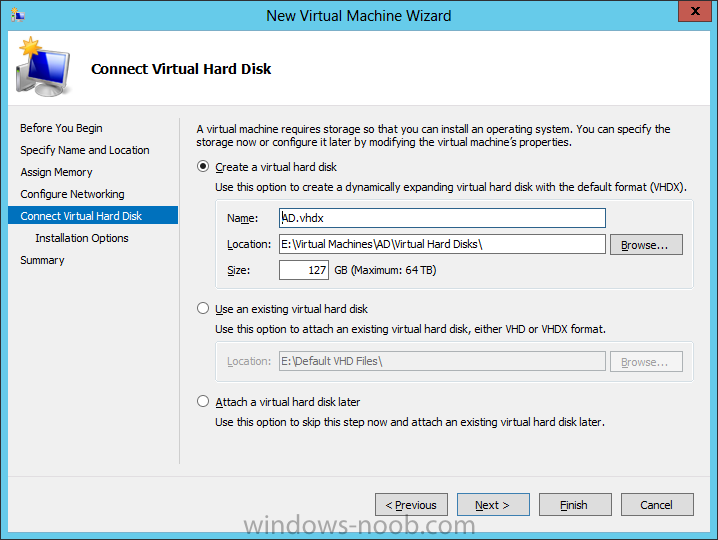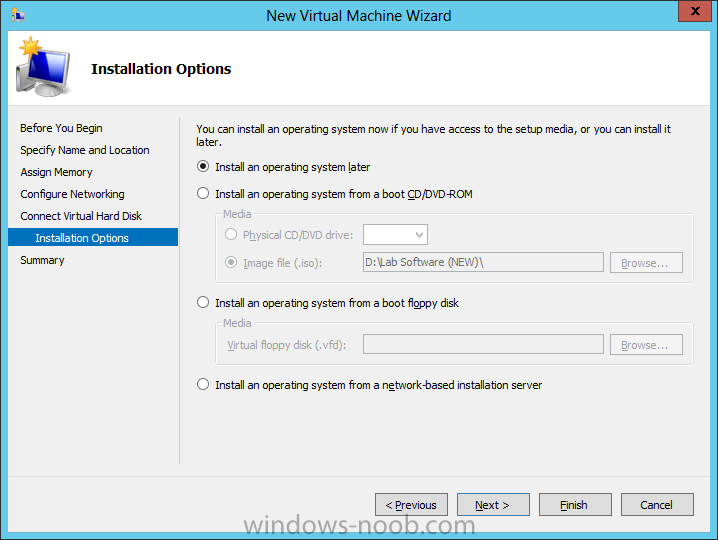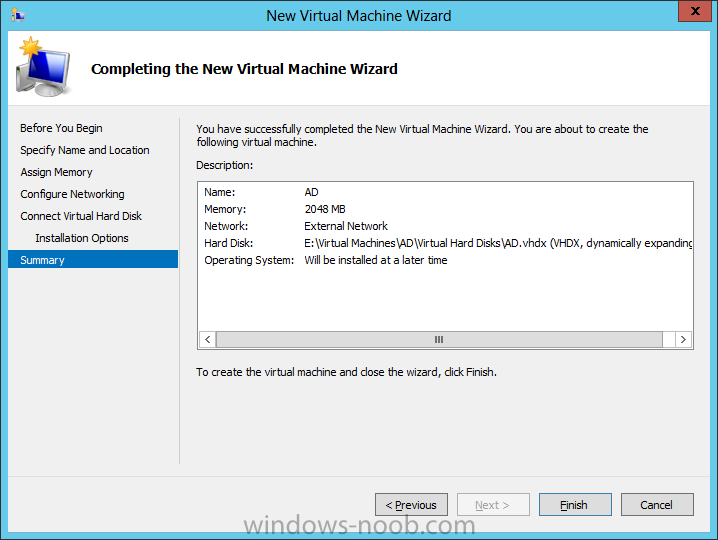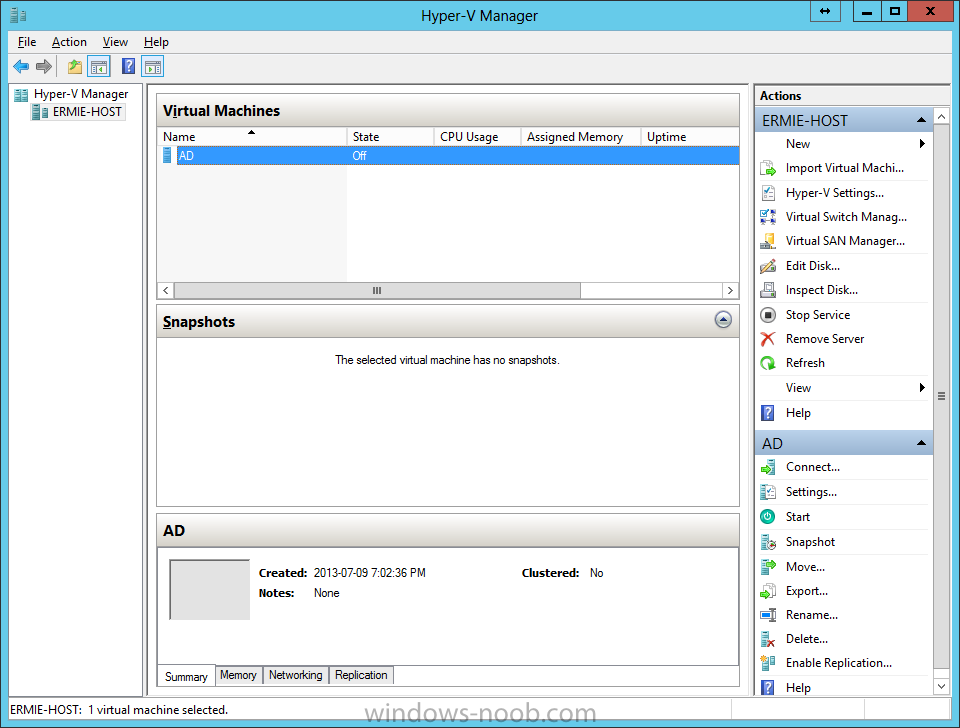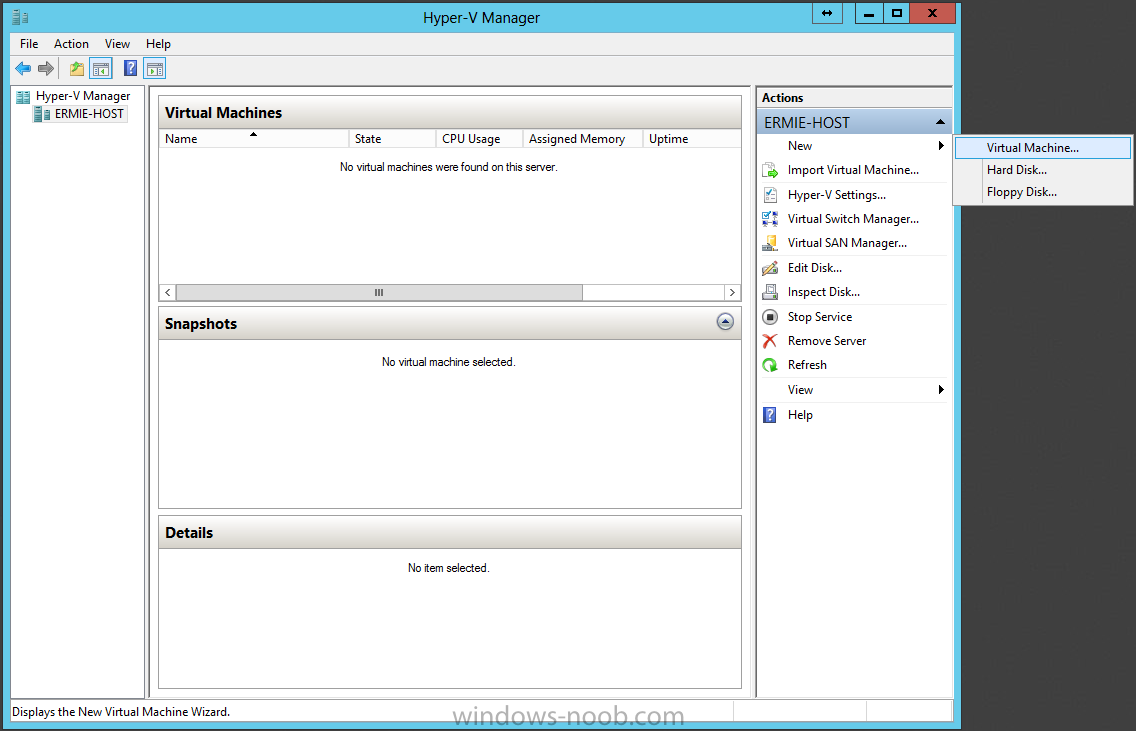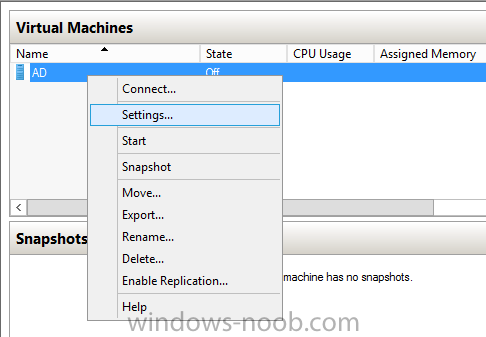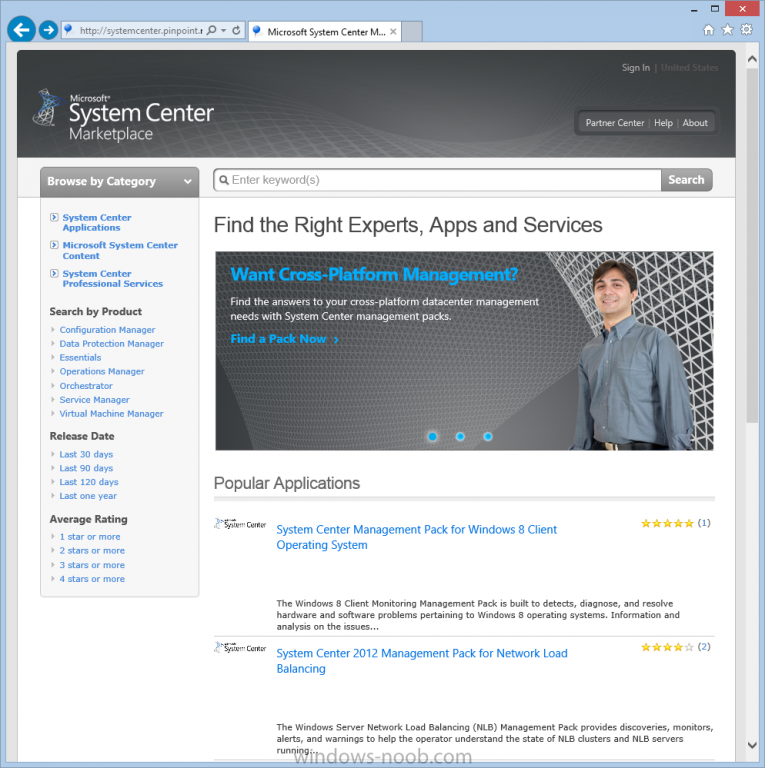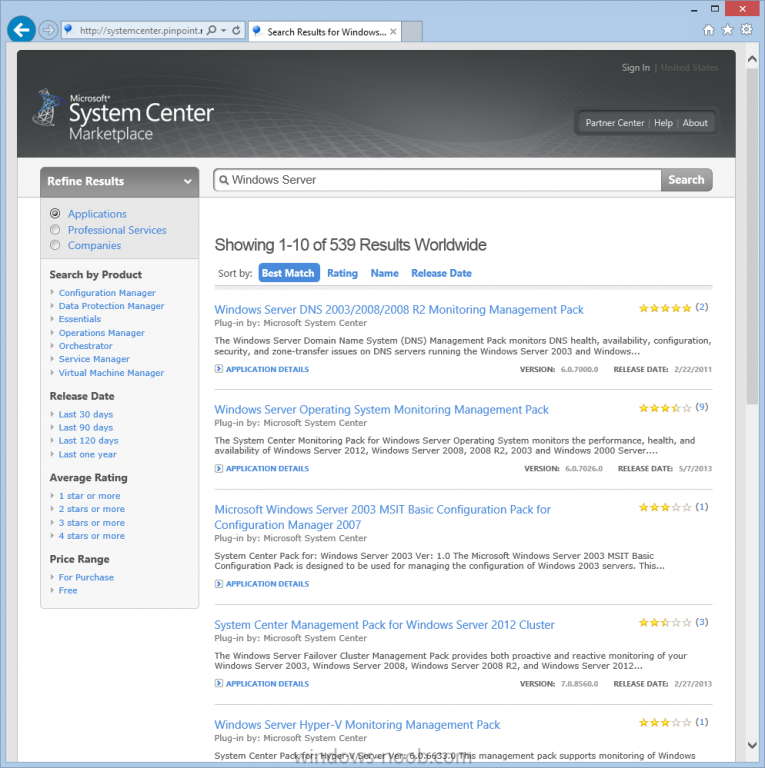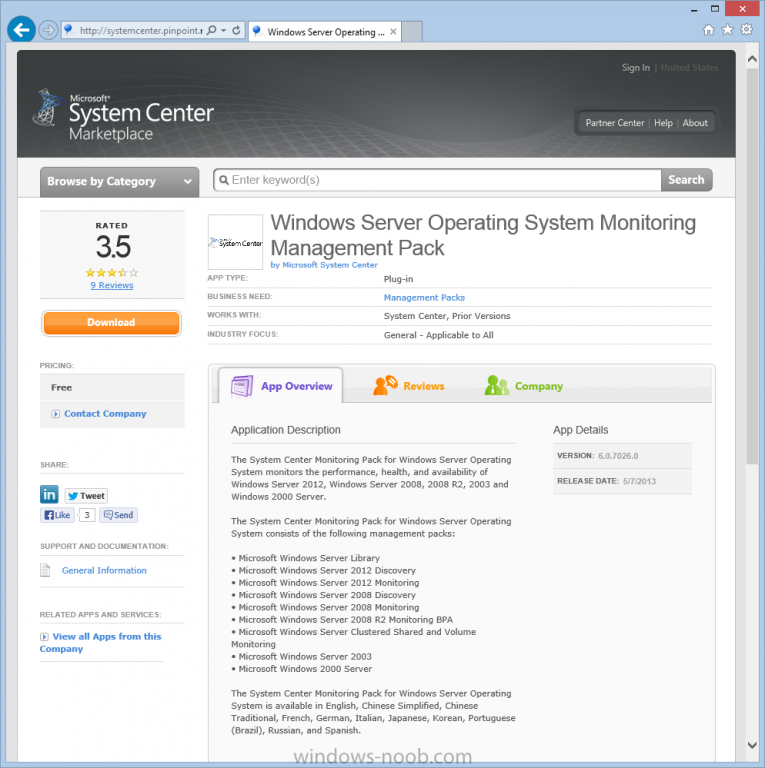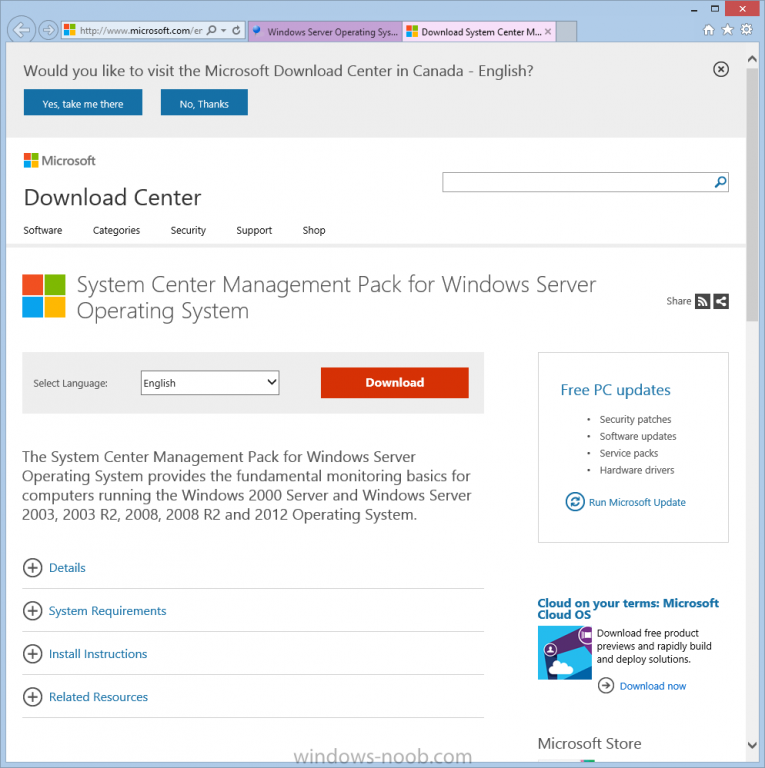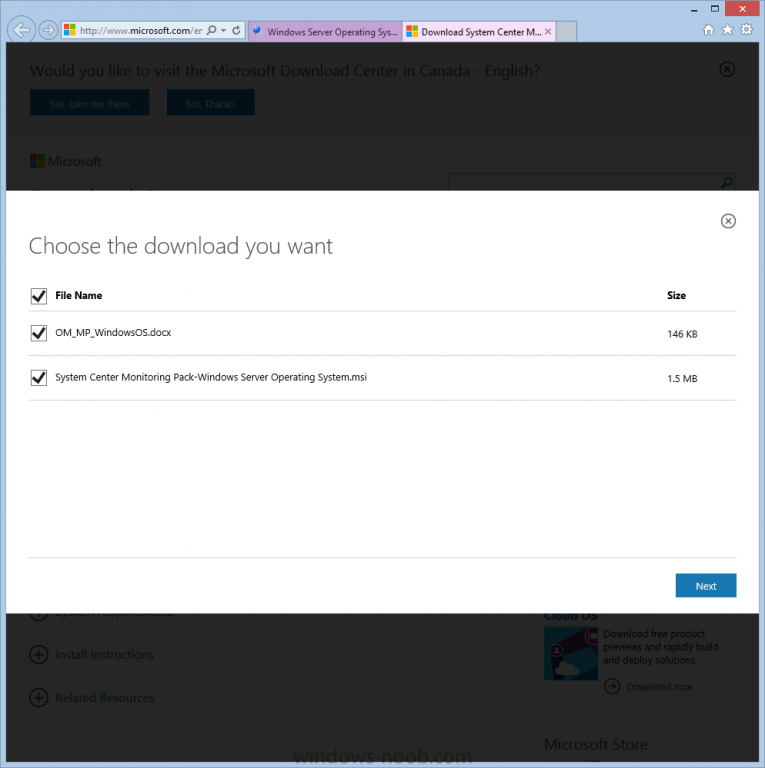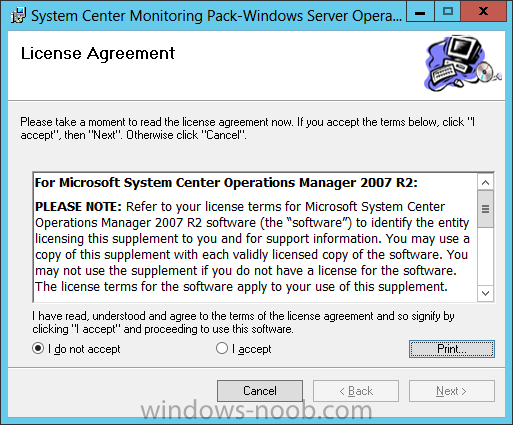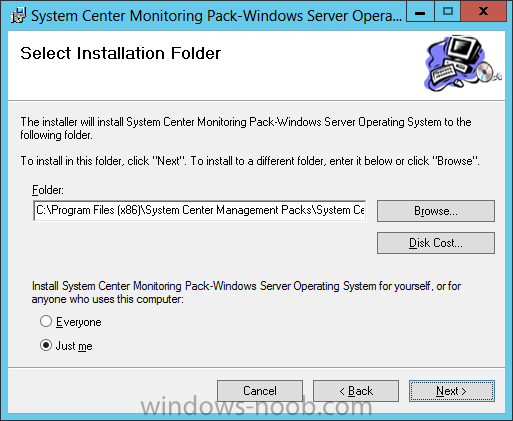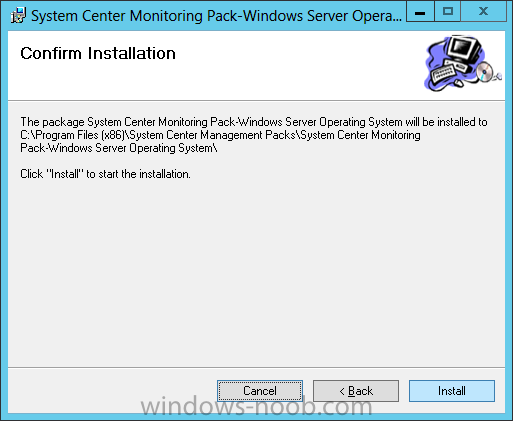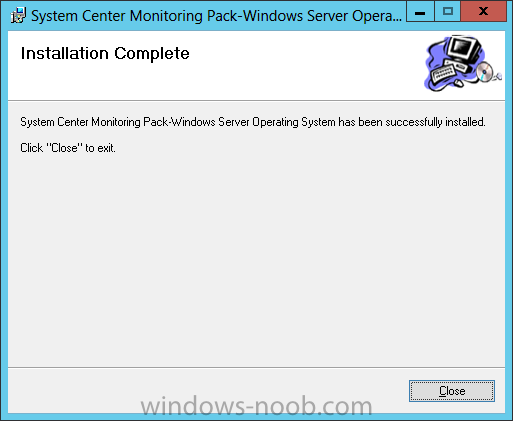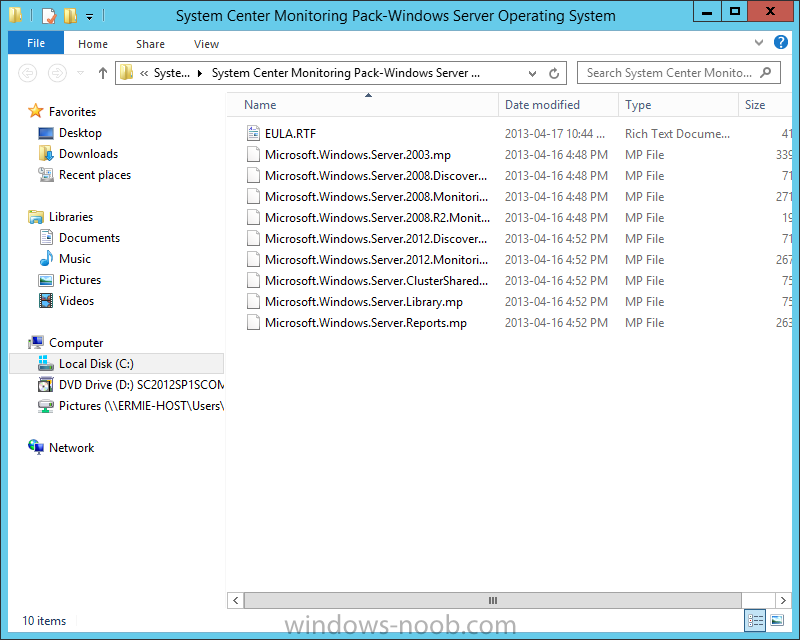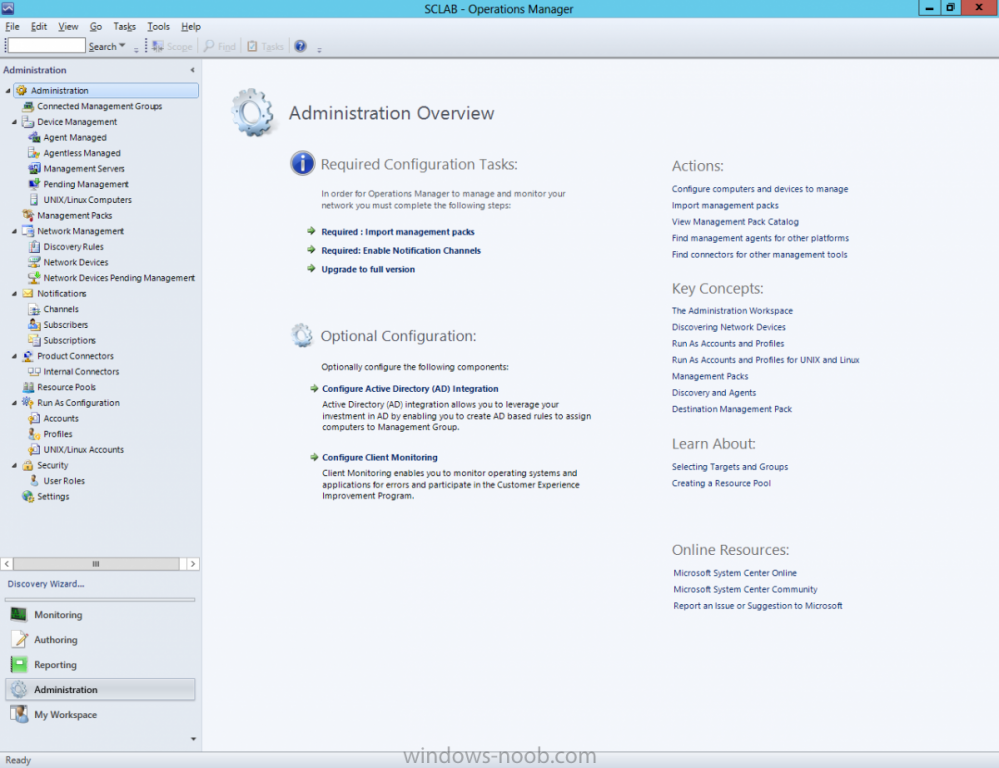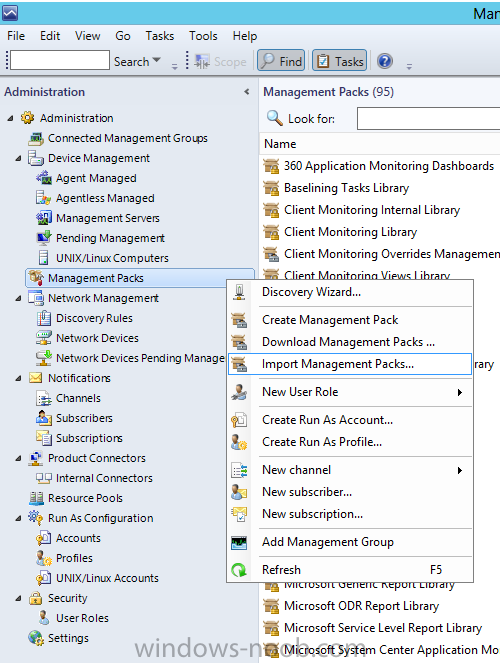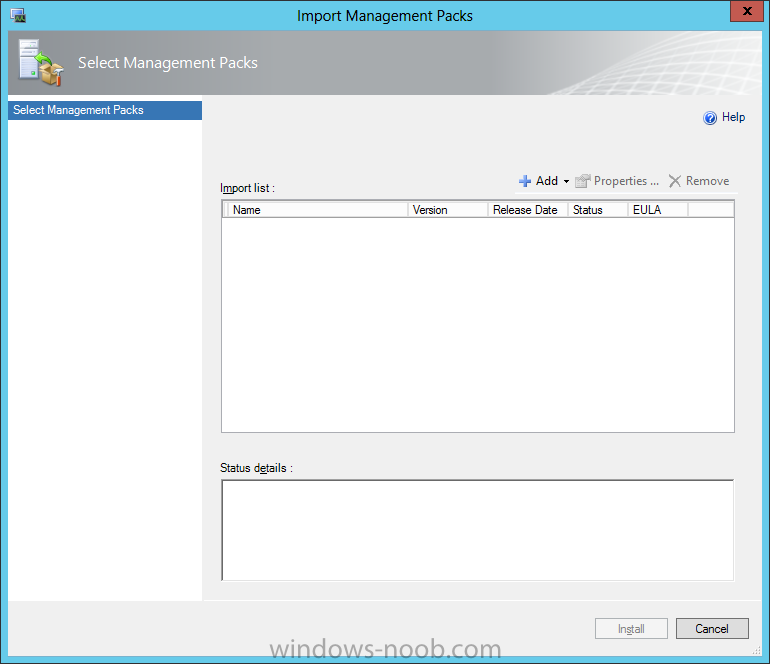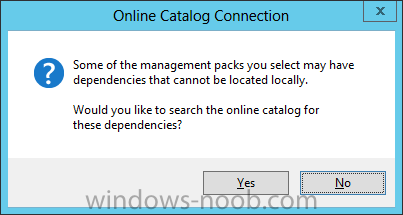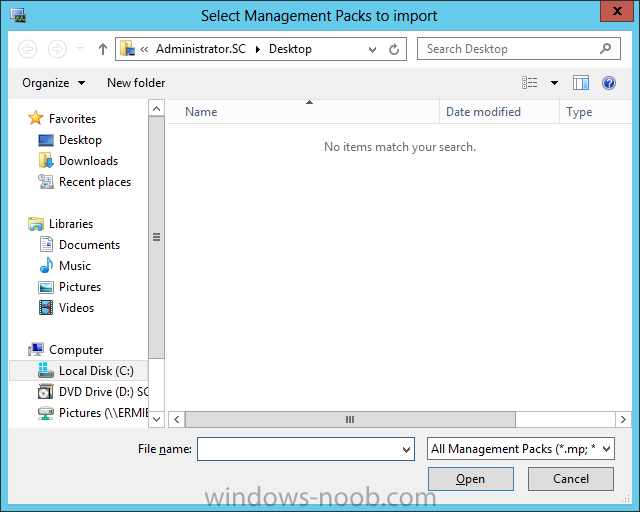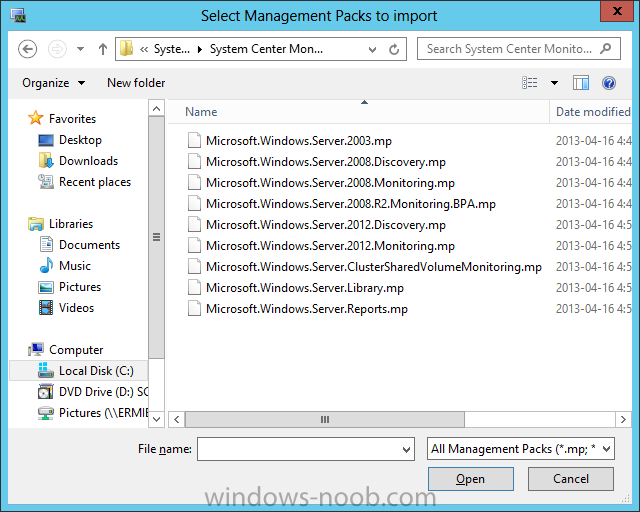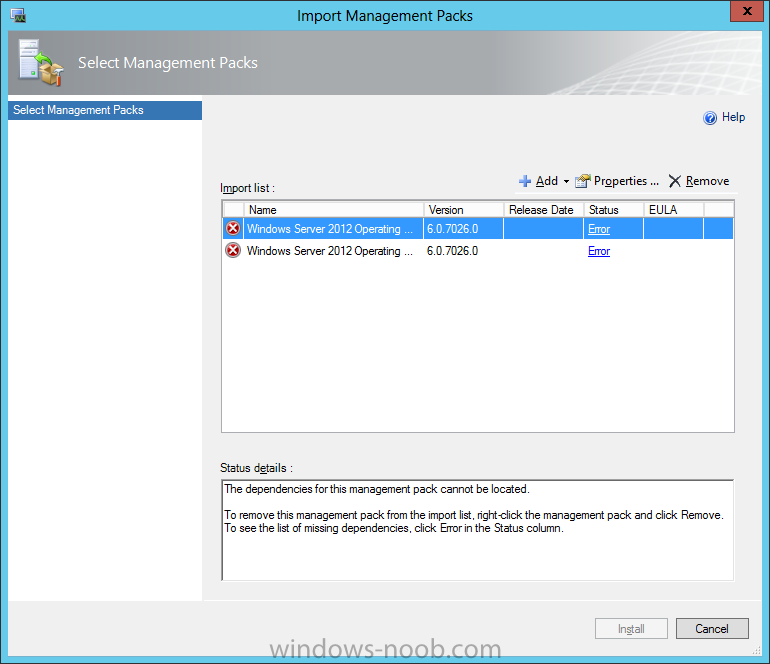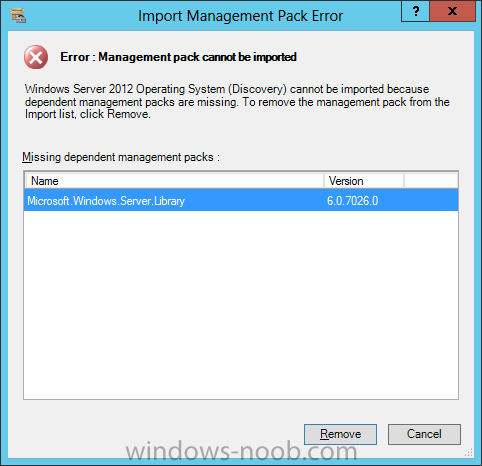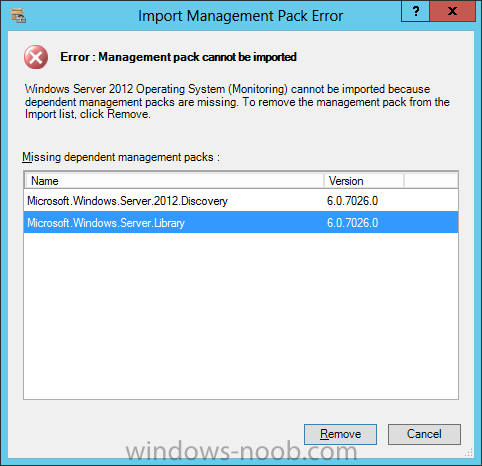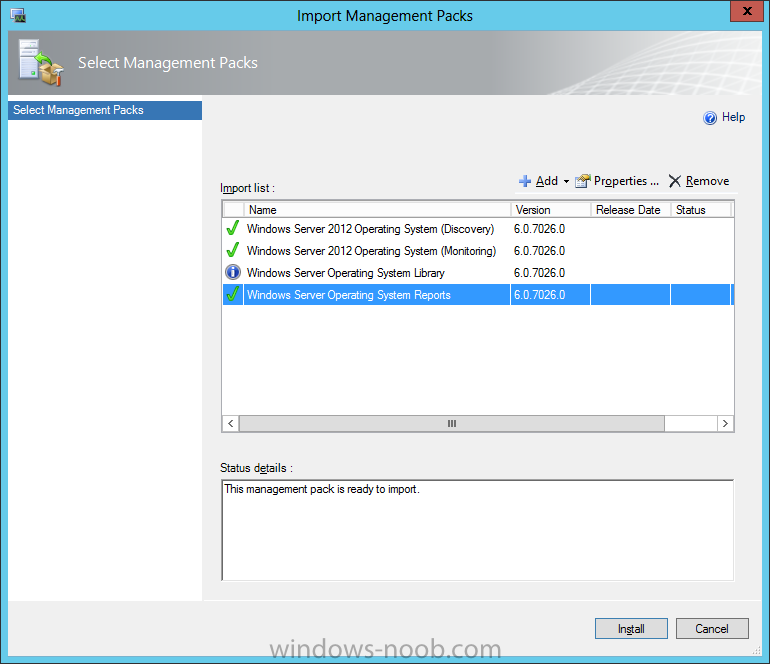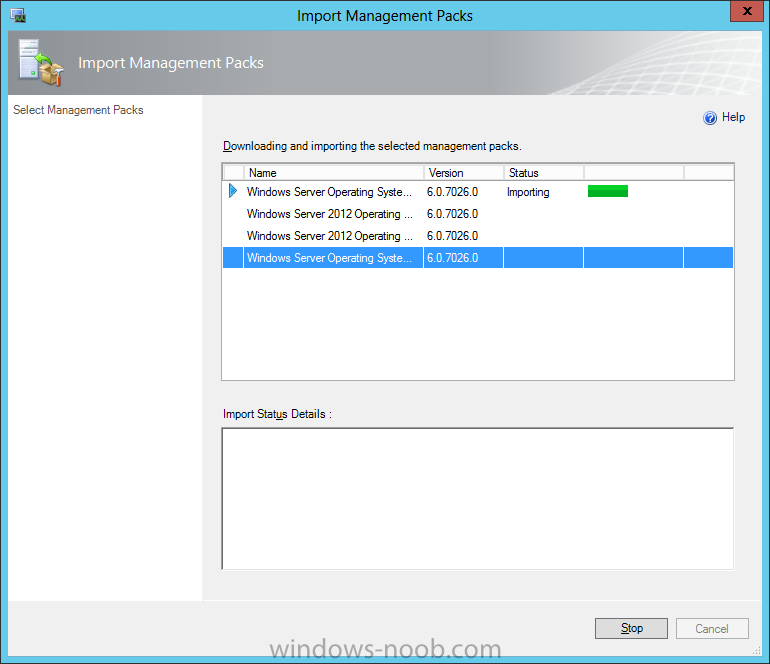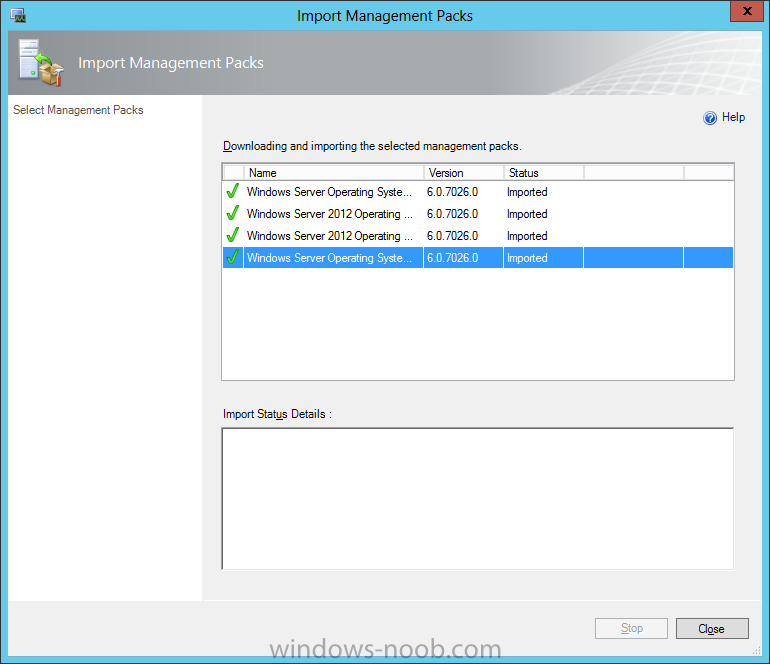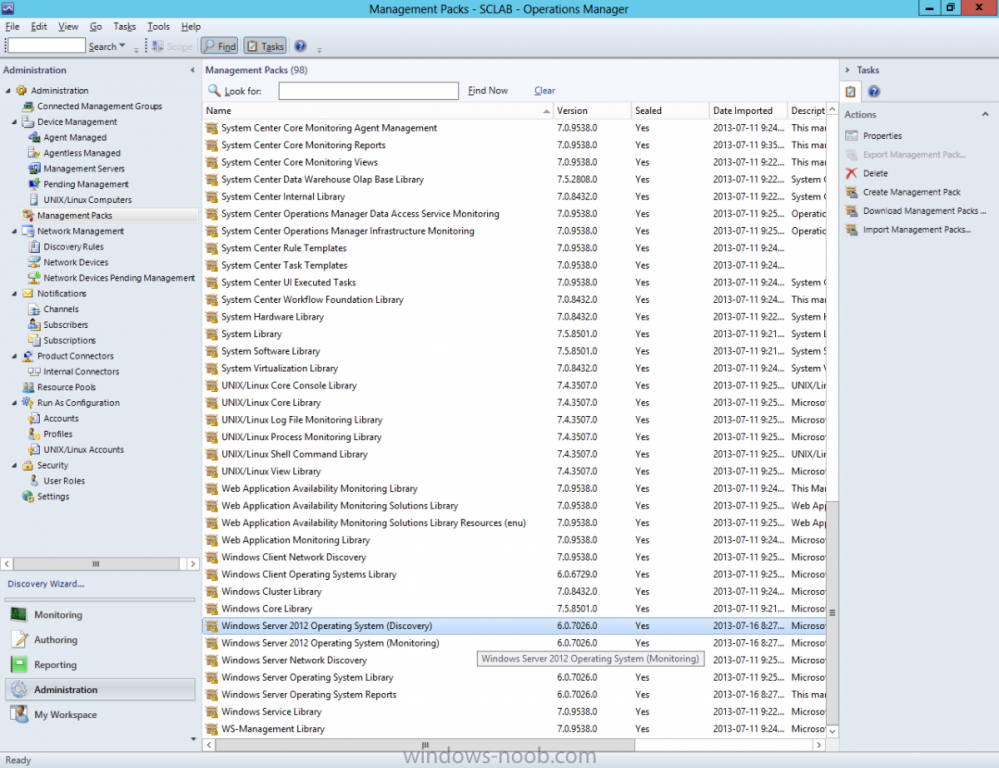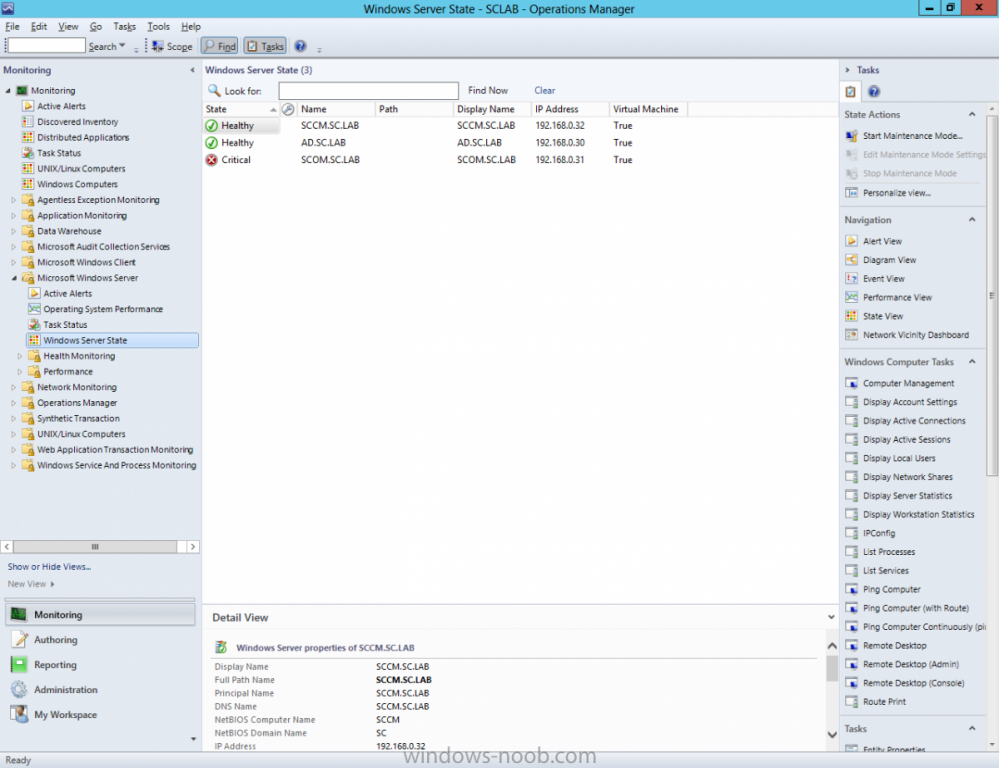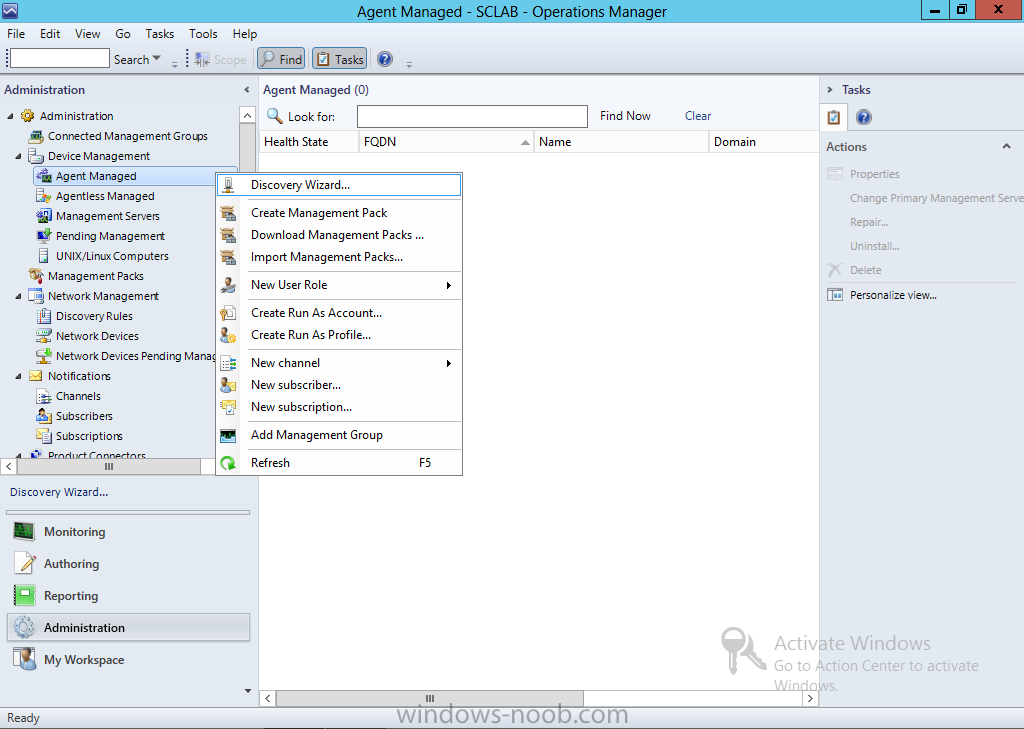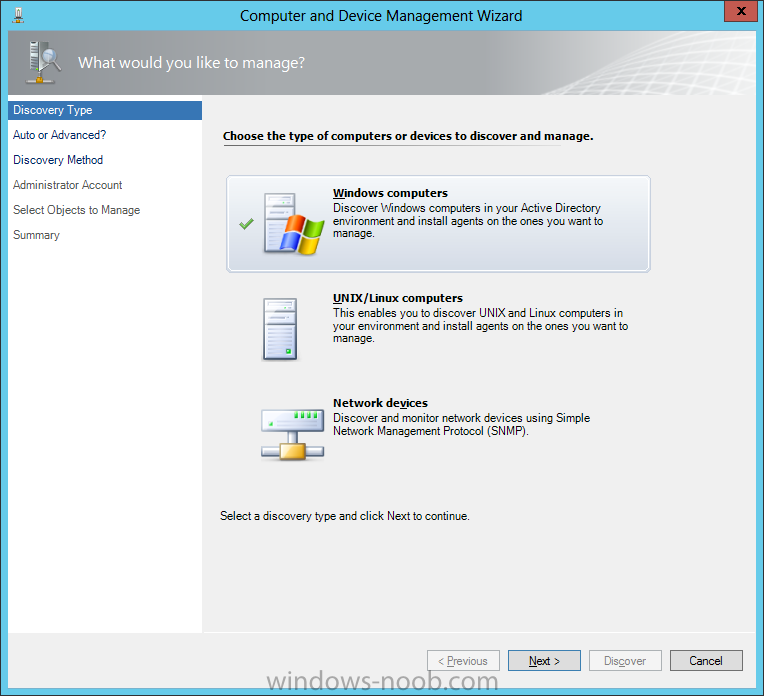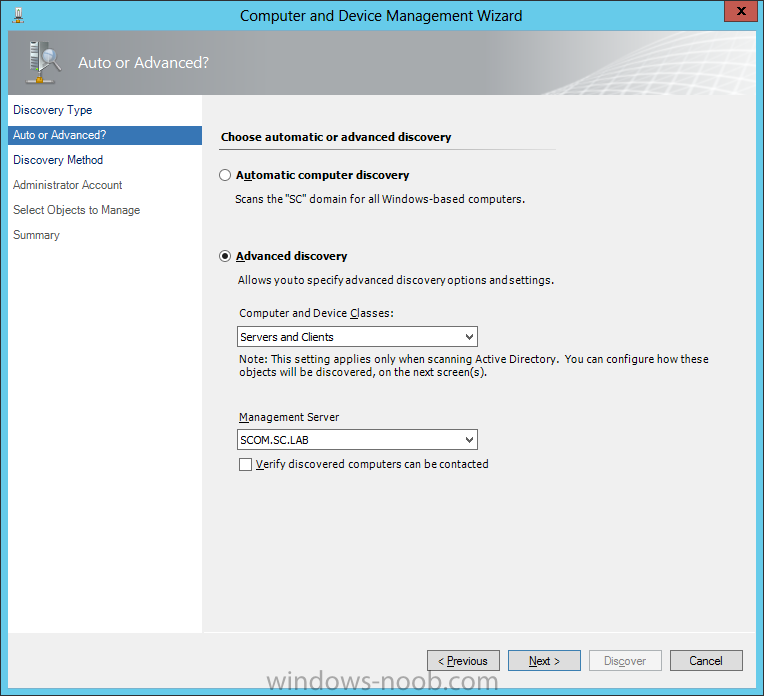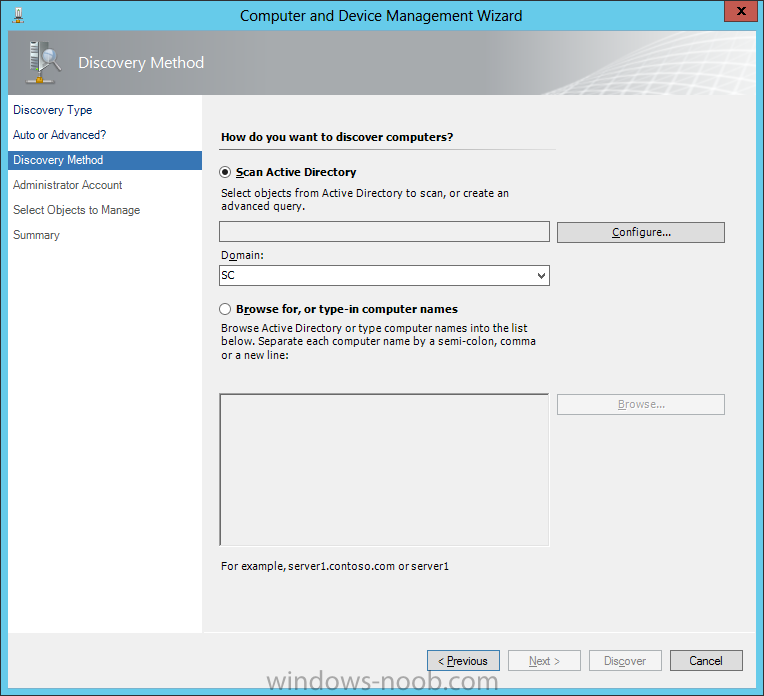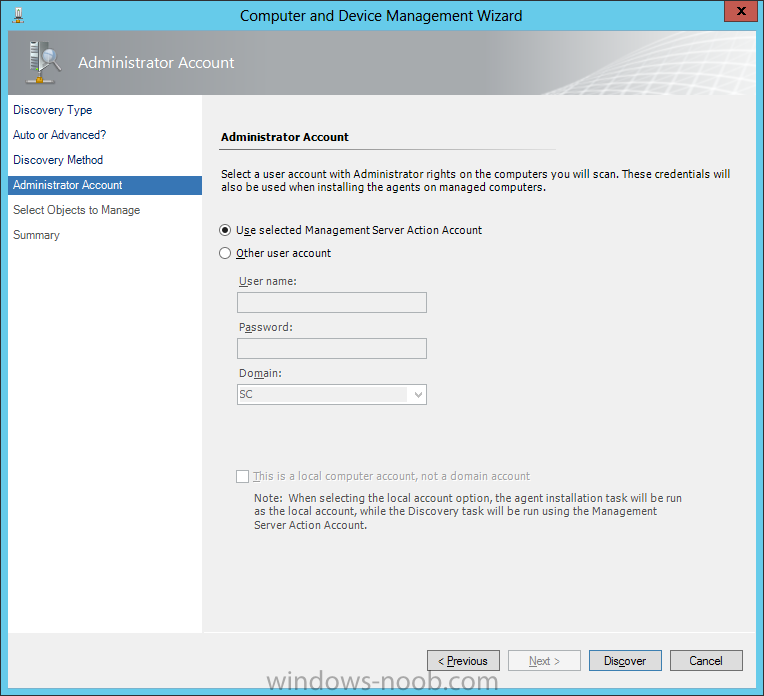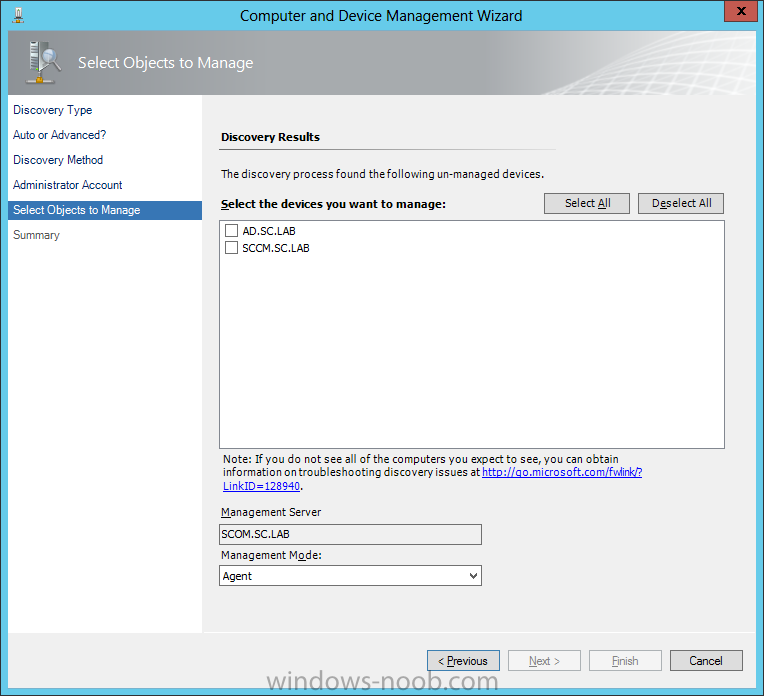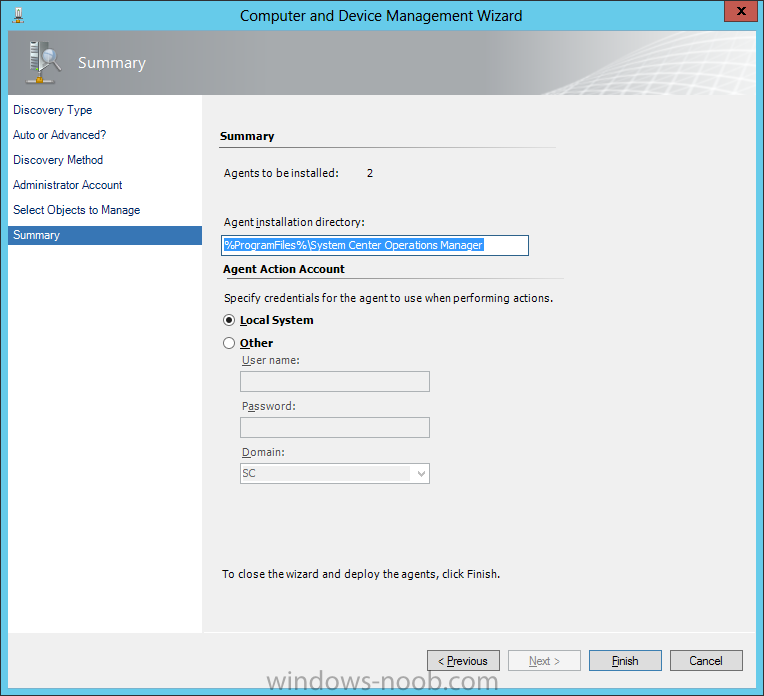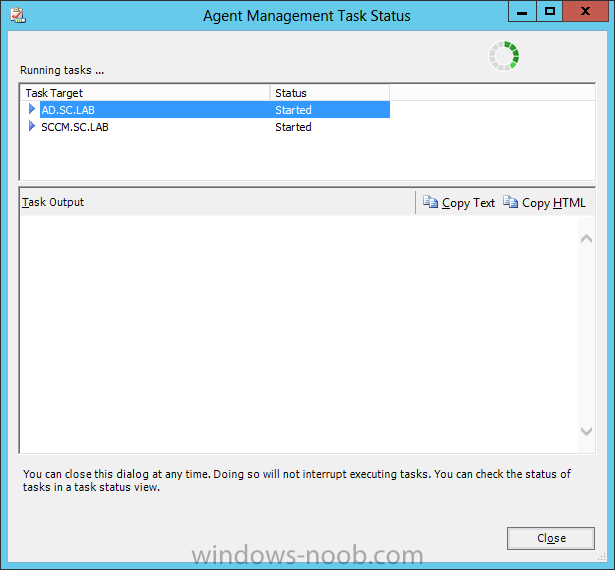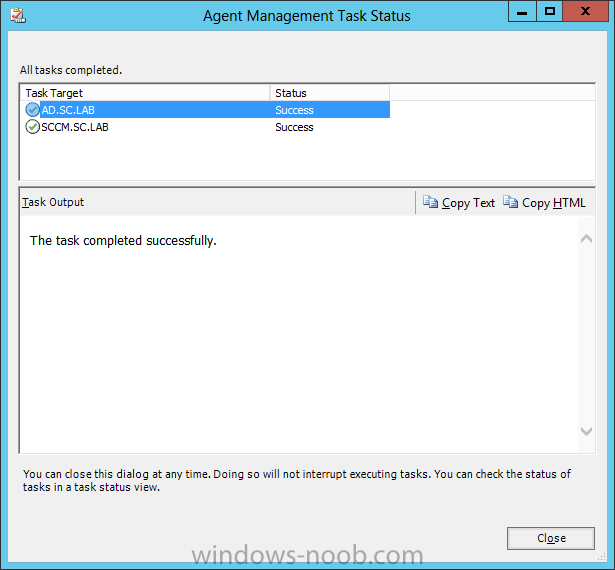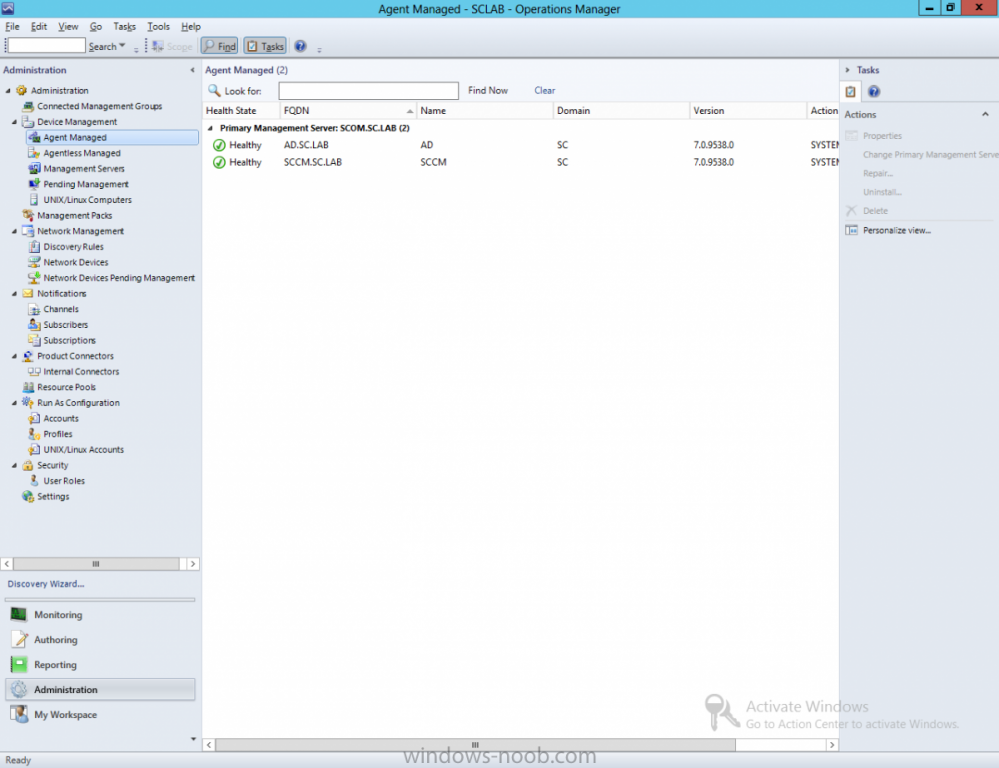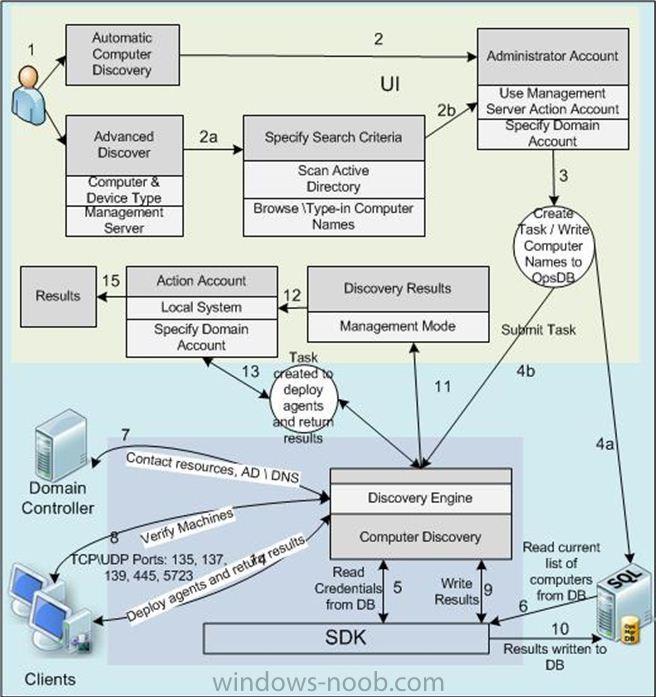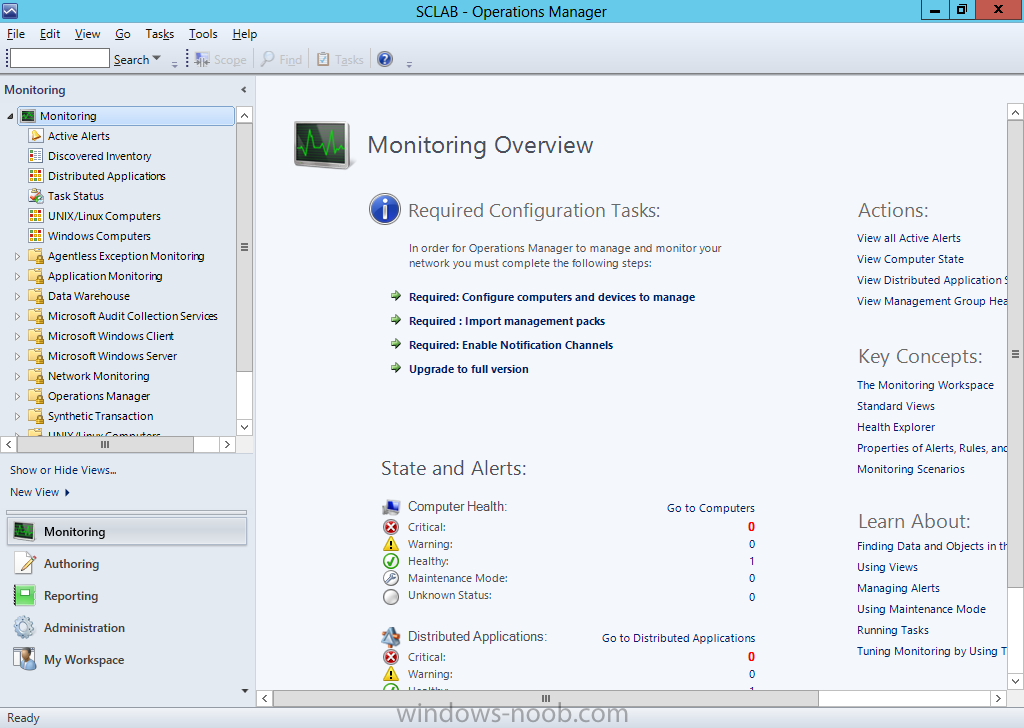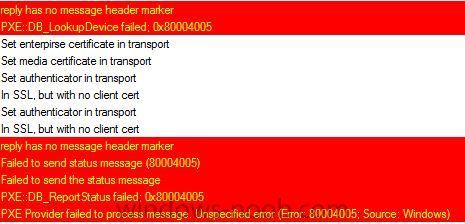Search the Community
Showing results for tags 'system center 2012'.
-
In our last post we installed the Operating System on our VM's. Now, we will install Active Directory. Install Active Directory Domain Services Now that we have the VMs created, and the OS installed on both, we need to first install/setup Active Directory (AD). When you log into a new installation of Server 2012, Server Manager will auto launch. From Server Manager, click on Manage, and choose ‘Add Roles and Features’. On the Add Roles and Features Wizard, read the information on the Before You Begin dialog, and then click Next. On the Installation Type screen, select ‘Role-based on feature-based installation’ and then click Next. On the ‘Server Selection’ screen, since we are installed Active Directory on this local system, ensure that it is selected, and click Next. Side note: Windows Server 2012 has a new feature that allows you to remotely install Roles and Features on other systems. On the Server Roles screen, select ‘Active Directory Domain Services’. When you select ‘Active Directory Domain Services’, immediately you will be presented with the following dialog. Click Add Features. On the Features screen, accept what has already been selected by default, and click Next. On the AD DS screen, read the information presented, and click Next. On the Confirmation screen, check the ‘Restart the destination server automatically if required’ checkbox, and then click Install. Note: You are not required to check the ‘restart’ checkbox, however, you’re going to have to restart the system anyways after the installation, so you might as well let the system do it for you. Note: When you check off the ‘Restart the destination server automatically if required’ checkbox, you will immediately be prompted with the following dialog. Click Yes. On the Results screen, click Close. After the system restarts, and Server Manager launches, you will have to promote the server as a domain controller. This is because Active Directory has been installed, but that process does not automatically promote the server. Click on the ‘Promote this server to a domain controller’ link. On the Deployment Configuration screen, select ‘Add a new forest’ since this is the first domain controller in our lab. Then enter a root domain name, and click Next. In my example I am using “SC.LAB” for System Center Lab (since I will be installing all other System Center products in my lab eventually). For the Domain Controller Options, select the appropriate Forest functional level, and Domain functional level. This is more applicable if you already have an existing domain and are adding a new domain controller. But since this is the first domain controller in our new domain, then we’ll use the highest level, that of Windows Server 2012. Also, don’t forget to create the Directory Service Restore Mode password. Then press Next. On the DNS Options screen, you can ignore this warning message and click Next. On the Additional Options screen, click Next. On the Paths screen, normally you would change the location for the database, log files, and SYSVOL, but since we are just in a lab environment, we’ll leave it at the defaults and click Next. On the Review Options scree, review what you have entered/selected, and click Next. The Prerequisites Check screen will check and confirm that everything passes before promoting the system as a domain controller. You will notice in my screenshot, that I have 1 warning because I didn’t set a static IP for the server yet. After installation completes, the system will automatically restart. You will then be presented with the login screen. Something to note here, that because we were originally logged in with a local account, the first time you want to log on using a domain account you will have to type the domain\username; in my example SC\Administrator. When you login, you will then see in the Server Manager, that AD DS is now listed, along with DNS. Now all that you need to do is assign a static IP to your domain controller. To do this, in Server Manager, select Local Server from the panel on the left. From there, click on the Ethernet link labelled ‘IPv4 address assigned by DHCP, IPv6 enabled’. This will cause the Networks Connections explorer to open. From here, right click on the Ethernet network that is displayed. This is in fact the network connection that we configured when we first created the VM. On the Ethernet Properties dialog, select ‘Internet Protocol Version 4 (TCP/IPv4)’ and click the Properties button. Within the Internet Protocol Version 4 (TCP/IPv4) Properties dialog, enter a static IP, gateway, and DNS that is applicable to your network. Once all the items have been entered, click OK. You will also have to click Close on the Ethernet Properties dialog as well. Congratulations, you now have a domain setup in your lab environment. Add Systems to Your Domain Now that you have your domain setup, you need to add your other VM (the one that we will use for SCVMM) to the domain before being able to install SCVMM. Log into the system you want to add to the domain. To do this in Server 2012, launch Server Manager, and click on Local Server. Then click on the computer name. This will launch the System Properties dialog. From this dialog, click the Change button. From this dialog, select the Domain option for ‘Member of’, and enter the domain name you want to join and press OK. After pressing OK, you are immediately presented with a Windows Security dialog, in which you need to enter the credentials of an account that has Domain Admin rights. Enter the credentials and click OK. Once the system is successfully joined to the domain, you will receive the following Welcome message. Press OK. After you press OK to the Welcome message, you will receive a second prompt, indicating that you need to restart the system for the changes to take effect. You will be back on the System Properties dialog. Press Close. When you press Close, you will receive yet another prompt about restarting the system. You can choose to Restart Now or Restart Later, but you won’t be able to install SCOM without the VM being added to the domain. After the system restarts, you will then be presented with the login screen. Something to note here, that because we were originally logged in with a local account, the first time you want to log on using a domain account you will have to type the domain\username; in my example SC\Administrator. Now we have our Active Directory server setup and ready, and the VM we will be installing SCOM on is joined to the domain. Now we can move onto installing SQL Server.
-
- SCVMM
- Virtual Machine Manager
- (and 5 more)
-
In our last post we created the VM's we require for our lab. Now we will move onto the Operating System (OS). Install the Operating System Now that we have created the VMs for our lab, we can install the Operating System (OS). Start by connecting to one of the VMs, either by double clicking on the VM in Hyper-V Manager, right click the VM and choose Connect, or click on Connect from the Action pane/menu. When you have the VM connection up, and an ISO mounted, power the VM on. On the Windows Setup screen, select the Language, Time/Currency Format, and Keyboard Method appropriate, and click Next. All you have to do now is click Install Now. Next you have to choose the Operating System and version you want to install. In our lab example, I will choose Windows Server 2012 Standard (Server with a GUI). Make your selection and then click Next. You will have to accept the license terms, and then click Next. For the Installation Type, since we don’t already have an OS installed, we will choose the ‘Custom: Install Windows only (advanced)’ option. Now select the hard drive that you want to install the OS to. Since we only created one hard drive when setting up the VM, we only have one to choose from. Select it, and click Next. Now all you have to do is wait for the installation to finish. Once the installation is complete, you will be prompted to enter a password for the local administrator account. This is different from a domain-based local administrator account. Enter a password and click Finish. After some final quick configuration, you will then be presented with the login screen. Now repeat these steps for the other VMs in the lab. NOTE: After you install an OS, you will need to rename the computer within the OS. To do this in Server 2012, launch Server Manager, and click on Local Server. Then click on the computer name. This will launch the System Properties dialog. From this dialog, click the Change button. From this dialog, enter the name you want to call the computer. In my lab, I called the Active Directory computer “AD”, and the Virtual Machine Manager computer “SCVMM”. Press OK after entering the name. You will encounter the following prompt. Click OK. Then click Close on the System Properties dialog. You can choose to either Restart Now or Restart Later, but the name change will not take effect until you do so. In our next post we will install Active Directory.
-
- SCVMM
- Virtual Machine Manager
- (and 3 more)
-
Welcome. For those of you that know me from my SCOM guides, I thought I would attempt to provide a similar series of guides for SCVMM. Please note that some of the screenshots (i.e. for creating the VM, OS/AD install, joining the domain, etc.) are from my SCOM guides. I figured that it would save time on the “normal” stuff, so that I can focus on the actual SCVMM part. Introduction: I use Hyper-V in my LAB and that's what all these virtual machines will be running on. In my lab, I have Windows Server 2012 Datacenter installed as the server OS on the host machine. All other virtual machines will be running Windows Server 2012 Standard edition, with the graphical user interface (GUI). My hardware consists of the following: Intel Xeon E5-2620 Asus P90X79 WS 64 GB G.Skill Ripjaws Z Series 2 x 256 GB Samsung 840 Pro Series SSD High Level Plan Here is a high level of what we are going to complete in this initial part of the series. Create the Lab Environment Install the Operating System Install Active Directory Domain Services Install SQL Server Install System Center Virtual Machine Manager In a later posts, we will also cover reporting, adding hosts, networks, storage, create templates, etc. So now let’s start with the first part, creating the lab environment. Create the Lab Environment:Hyper-V Configuration As mentioned, my environment uses Hyper-V. So, we’re going to start by configuring Hyper-V for our needs, and creating the Virtual Machines (VMs) required for our lab. The first thing we need to do is setup a Virtual Switch for the VMs to connect through. Launch Server Manager, click on Tools, and select Hyper-V Manager. When Hyper-V loads, it will have nothing in it. Even if we were to create a VM, it wouldn't have a network connection to use. So we’ll start with creating a Virtual Switch. As you can from my screenshot, I have 2 LAN ports on my host. One of them has a connection to my home network and the Internet. In the Hyper-V Manager, click the Virtual Switch Manager from the Actions pane. Now, click on the Create Virtual Switch button. From here, you now need to configure the virtual switch that your VMs will use. Give it a name to clearly identify it (in my case I called it ‘External Network’), and choose the connection type. For more information about virtual networks, see the following TechNet article: http://technet.microsoft.com/en-us/library/cc816585(v=ws.10).aspx. Here is an excerpt from the article: § External virtual networks. Use this type when you want to provide virtual machines with access to a physical network to communicate with externally located servers and clients. This type of virtual network also allows virtual machines on the same virtualization server to communicate with each other. This type of network may also be available for use by the management operating system, depending on how you configure the networking. (The management operating system runs the Hyper-V role.) For more information, see “A closer look at external virtual networks” later in this topic. § Internal virtual networks. Use this type when you want to allow communication between virtual machines on the same virtualization server and between virtual machines and the management operating system. This type of virtual network is commonly used to build a test environment in which you need to connect to the virtual machines from the management operating system. An internal virtual network is not bound to a physical network adapter. As a result, an internal virtual network is isolated from all external network traffic. § Private virtual networks. Use this type when you want to allow communication only between virtual machines on the same virtualization server. A private virtual network is not bound to a physical network adapter. A private virtual network is isolated from all external network traffic on the virtualization server, as well any network traffic between the management operating system and the external network. This type of network is useful when you need to create an isolated networking environment, such as an isolated test domain. For our demonstration, we are going to use an External Network so that the VMs can communicate with the Host system. Make all the appropriate selections and so forth, and then press OK. You may encounter the following warning message. This is because we are remotely connecting to the Host machine using the same network connection that we are about to setup as a Virtual Switch (hence selecting the ‘Allow management operating system to share this network adapter’ checkbox). Press ‘Yes’ to the dialog. Now that we have the virtual switch setup, we can start creating VMs for our lab. Create the Virtual Machines Let’s now create the VM’s we will need for the lab, specifically one for Active Directory, and another for SCVMM (since we are install all roles within the same server). In Hyper-V Manager, from the Actions pane, click on New and choose Virtual Machine. On the New Virtual Machine wizard beginning screen, click read the information presented and then click Next. Enter a name for the VM. Note that this is NOT the name the VM will have within the Operating System (unless you name it the same), but rather, used as an identifier in Hyper-V Manager. After you have entered a name, click Next. Now assign the amount of memory you want your VM to have, and then press Next. This is the screen where you connect your VM to the network that we created, then press Next. This is the screen where you configure how large a hard drive the VM will have. Make the appropriate customizations and click Next. For the Installation Options, choose if you will install an OS later, or if you want to use an ISO, then click Next. On the Summary screen, review your selections and entries, and click Finish. Once the VM is created, it will appear in the Hyper-V Manager. If you want to configure further settings, like the number of CPUs and mounting an OS ISO, right click on the VM and choose Settings or click on Settings from the Actions pane. Repeat these steps for each VM you need to create, in our case one for Active Directory and another for SCVMM. Here are the settings I have used for each of the VM’s: Active Directory: Virtual Machine Name: AD Memory: 2048 MBNOTE: Active Directory doesn’t need 2 GB of RAM, it will run fine with 512 MB. I just increased the RAM so that the OS would install/respond faster. CPUs: 2 OS: Windows Server 2012 SCVMM: Virtual Machine Name: SCVMM Memory: 4096 MBNOTE: You may need to increase the amount of RAM this VM has, depending on performance. CPUs: 2 OS: Windows Server 2012 In our next post we will install the Operating System.
-
- SCVMM
- Virtual Machine Manager
- (and 3 more)
-
In our last post, we finished configuring computers and devices to be managed by SCOM. So at this point we have SCOM setup and running, along with a few agents installed on other systems in our environment. Technically, you could say that we are monitoring our environment, however, this isn’t entirely accurate. In actual reality, SCOM is only monitoring the state of the Agent that is installed on the systems. Right now, SCOM has no insight into the Operating System, or any middleware platforms (i.e. SQL, IIS, AD, etc.). We are going to correct that by importing Management Packs. Download Management Packs To start, we need to download the Management Packs (MPs) we want to install. Open a browser and navigate to the System Center Marketplace (URL: http://systemcenter.pinpoint.microsoft.com/en-US/home). From here, enter your search term, and click Search. For our example we will enter “Windows Server” (I will explain why shortly). Currently there are 539 results, though this may change depending on when you perform your search. In reference to SCOM, we are specifically looking for ‘Monitoring Management Pack’ as this marketplace will also contain other packs for use with SCCM, Orchestrator, etc. In our example of “Windows Server”, look for “Windows Server Operating System Monitoring Management Pack”, and click the title (which will be a hyperlink). This will bring you to that specific Management Packs page. From this page you can read information about it (i.e. which OS’s it supports), reviews, release date, etc. You will need to determine if this Management Pack is applicable to your environment. This one is applicable to my lab environment I am using, because I have Windows Server 2012. Click the orange ‘Download’ button in the top left area of the page. This will bring you to the Microsoft Download Center. From here you can read further information about system requirements, installation instructions, etc. When you are ready, click the red ‘Download’ button. You will be prompted with a dialog, asking you which files you want to download. The MSI file contains the Management Pack, and the DOCX provides more in depth information. I would recommend downloading both files. From my personal experience, I would read the entire Management Pack documentation twice (and I have done so for each/every Management Pack that I have implemented). This serves 2 purposes. First, I highlight points that are applicable to the environment that I am implementing it in. Second, I review it a second time focusing on the points I’ve highlighted. Select the file(s) that you want to download, and click the Next button. Download the files to your either your workstation or your SCOM server. I mention your workstation, only because you probably don’t have Microsoft Word installed on your server, and you need to be able to read the documentation. At this point to move forward, I will assume that you have downloaded or copied the MSI file (in this specific example ‘System Center Monitoring Pack-Windows Server Operating System.msi’) to your SCOM server. Install Management Packs On your SCOM server, run the MSI to install it. Read and accept the License Agreement and click Next. Next select the folder you want to install to. There are a few things to take note of at this point. First, remember the directory that the Management Pack is installed to, as this will be used in a later step. Second, it is recommended that you select the option to install the Management Pack for ‘Everyone’ to avoid any access related issues. Third, and the most important, is that this is actually NOT installing the Management Pack. I disagree with the wording used in this dialog, since in fact this is not installing anything, but rather is extracting the files required for installation (you’ll see what I mean shortly). But I digress. Click Next. Finally, click the Install button. The installation will be quick. Once it is complete, click Close. When you close the installation dialog, the directory that you installed the Management Pack to MAY open in File Explorer. I stress “may” because I haven’t noticed every Management Pack that I have installed behave this way. If File Explorer does open, you can close it, as we will work with these files in another step. Now that we have “installed” the Management Pack so that the .MP files are extracted, we can now move onto the final step, importing. Import Management Pack At this point, we have downloaded the Management Packs we are interested in (in our example the Windows Server OS), installed it on the SCOM server so that the .MP files are extracted and available for use. Now we have to import the Management Packs so that SCOM will have the information required to identify and monitor the technology platform. Start by opening the SCOM console, and navigating to the Administration space. From the Administration space, you can either click on the link ‘Required: Import Management Packs’, or you can right-click on the Management Pack item in the left navigation pane. I am going to demonstrate using the navigation pane option, since the link may not always be present after you import a few Management Packs. So, right-click on the Management Pack item in the navigation pane, and choose ‘Import Management Packs’. This will cause the Import Management Packs wizard to launch. From the first and really only dialog screen, click the Add button. You will be presented with 2 options, ‘Add From Catalog’ and ‘Add From Disk’. The ‘Add From Catalog’ option will enable you to search the catalog directly, however, most Production systems don’t have an Internet connection, which this option requires. \ Therefore, we will demonstrate and choose the ‘Add From Disk’ option. When you select this option, you will immediately receive the following prompt. Since, in Production, your server probably will not have Internet access, we will choose ‘No’. Now, you will see the File Explorer dialog. From here you need to navigate to the location that you installed the Management Pack (in our example it is: C:\Program Files (x86)\System Center Management Packs\System Center Monitoring Pack-Windows Server Operating System\). When you navigate to the location that the Management Pack is installed, you will then see several .MP files. You can select more than one MP file at a time. Since our lab example is running on Windows Server 2012, we will select the ‘Microsoft.Windows.Server.2012.Discovery.mp’ and ‘Microsoft.Windows.Server.2012.Monitoring.mp’ files, then click Open. The system will add the .MP files to the import list. However, you will notice that there are a few errors! Why is that? As you can see in the Status Details this is because some Management Packs have dependencies. To see which dependencies you are missing, click the Error link. You can see from the following 2 examples, that some Management Packs have more than one dependency. So, to be able to import the Windows Server 2012 Operating System Management Pack(s), we need to also import 3 additional Management Packs. Thankfully, we can import all of these Management Packs at the same time. So, click Cancel on the Import Management Pack Error dialog, and go back to the Import Management Packs dialog and click Add > From Disk, and select the other dependant Management Packs. Your Select Management Packs dialog should then look similar to this: Now all you have to do is click the Install button. The import will begin, and may take some time depending on the number of Management Packs you are importing. Once the import has completed, click Close. You can confirm that the Management Packs have been successfully imported, but looking for them in the Management Pack list. Additionally, when a new Management Pack is imported, there may be new/updated Reports included. As well, if you navigate to the Monitoring space, you will see new folders/views for the technology platform that the Management Pack relates to. In our example, we now see the Microsoft Windows Server folder, and within there it has a Windows Server State view that shows the status of the server(s). With this new Management Pack imported into SCOM (specifically the ‘Discovery’ Management Pack), SCOM is now able to identify systems that are running this technology platform. This is how it works for all Management Packs (i.e. SQL, IIS, WSUS, AD, etc.). SCOM will now start Alerting to issues that pertain to the technologies that it can detect and monitor. Congratulations, your SCOM environment is now able to monitor your Windows Server 2012 Operating System and report/alert on any issues. For any other technologies, repeat the same steps described. Now that we have SCOM monitoring and alerting to issues in our environment, we need a way to easily be notified when there is an issue. That’s why we need to Enable Notification Channels. Stay tuned for the next post.
-
- SCOM
- Operations Manager
-
(and 4 more)
Tagged with:
-
Hello everyone, if you have been following along with my installation guides, you should now have SCOM installed. But SCOM won’t do you any good if it doesn’t have any computers or devices to manage, so that’s where we will start as part of these Configuration guides. First, start by launching the SCOM console. Now, navigate to the Administration pane. From there, under Device Management find ‘Agent Managed’. Right-click on the Agent Managed item, and choose Discovery Wizard. The Computer and Device Management Wizard will start. You must first choose why type of device you want to discover and manager. You have 3 choices, Windows Computers, UNIX/Linux Computers, or Network Devices. For our example we will choose Windows Computer, and then click Next. On the Auto or Advanced screen, you can choose to let SCOM scan the domain to find the computers, or if you want more control over which systems are monitored, you can choose the Advanced Discovery. If you choose the Advanced option, you can also choose if you want to discover only servers, clients, or both. Additionally, you can choose which Management Server you want the discovered systems to be managed by. Since we only have one Management Server in our lab, we only have one option, but in a Production environment you can use this to balance the load between multiple Management Servers. Make your appropriate selections, and click Next. Next you need to specify the Discovery Method that will be used. Again, you can allow SCOM to scan Active Directory, or you can manually type the computer names for it to check against. From my own personal experience, it is usually best to manually type the names of the computers, as this gives you more control over what systems are added to SCOM, and how many at a time. Choose your appropriate options, and click Next. You can now specify the Administrator Account to use. We will accept the default selection to use the Management Server Action Account, and then click Discover to initiate the process. SCOM will then go off and attempt to communicate with the specified systems. Here is a diagram that shows how computer discovery works in SCOM. The systems that SCOM is able to communicate with will appear in the Discovery Results. From there, select the device(s) that you want to install the SCOM agent on. In our example we will install the SCOM agent on all systems in our lab environment. Make your selection(s) and click Next. On the Summary screen, you can control where the SCOM Agent will be installed. In my personal experience, the default location is sufficient. You can also provide an Agent Action Account. In a lab environment, we can use the Local System, however, in a Production environment I have personally seen a designated Agent Action Account (usually a Service Account) be used in this context. Make the appropriate selection/input, and click Finish. SCOM will then start the Agent installation task. Depending on your network, the number of devices, etc. it may take a while to complete. When the discovery and agent installation completes, it should look like this. You can click Close on the status window. Returning back to the SCOM console, you will now see the system(s) that you discovered and installed the Agent on. Congratulations, not only do you have a working SCOM environment, but you also have SCOM actively monitoring! In the next part of this series, we will Import Management Packs.
-
- SCOM
- Operations Manager
-
(and 3 more)
Tagged with:
-
When i try to pxe boot a client, i only get PXE-E53 "No boot filename received" I have tried to reinstall wds/pxe several times.. searched trough a lot of post with similar problems..tried lot of solutions.. but still stuck.. I really dont know where to begin to troubleshoot this.. SMSPXE: reply has no message header marker SMSPXE 27.04.2012 12:36:19 3936 (0x0F60) PXE::DB_LookupDevice failed; 0x80004005 SMSPXE 27.04.2012 12:36:19 3936 (0x0F60) Set enterpirse certificate in transport SMSPXE 27.04.2012 12:36:19 3936 (0x0F60) Set media certificate in transport SMSPXE 27.04.2012 12:36:19 3936 (0x0F60) Set authenticator in transport SMSPXE 27.04.2012 12:36:19 3936 (0x0F60) In SSL, but with no client cert SMSPXE 27.04.2012 12:36:19 3936 (0x0F60) Set authenticator in transport SMSPXE 27.04.2012 12:36:19 3936 (0x0F60) In SSL, but with no client cert SMSPXE 27.04.2012 12:36:19 3936 (0x0F60) reply has no message header marker SMSPXE 27.04.2012 12:36:19 3936 (0x0F60) Failed to send status message (80004005) SMSPXE 27.04.2012 12:36:19 3936 (0x0F60) Failed to send the status message SMSPXE 27.04.2012 12:36:19 3936 (0x0F60) PXE::DB_ReportStatus failed; 0x80004005 SMSPXE 27.04.2012 12:36:19 3936 (0x0F60) PXE Provider failed to process message. Unspecified error (Error: 80004005; Source: Windows) SMSPXE 27.04.2012 12:36:19 3936 (0x0F60) Edit: also tried to add option 66/67 in dhcp.. i get past the pxe boot.. but recieve a \boot\bcd error And the same lines of errors in SMSPXE
- 26 replies


